500 Blood Sugar Levels: Understanding Diabetic Coma Symptoms and Causes
What are the symptoms of diabetic coma when blood sugar reaches 500 mg/dL. How is diabetic coma caused by extremely high glucose levels. What are the risks and treatment options for severe hyperglycemia.
What is Considered Dangerously High Blood Sugar?
Blood glucose levels over 500 mg/dL are considered extremely dangerous and a medical emergency. At this level, a person is at high risk of developing life-threatening complications like diabetic ketoacidosis (DKA) or hyperosmolar hyperglycemic state (HHS). Normal blood sugar typically ranges between 70-140 mg/dL, with levels above 180-200 mg/dL considered high. When glucose rises above 500 mg/dL, immediate medical attention is crucial.
Why is 500 mg/dL Blood Sugar So Dangerous?
At this extreme level of hyperglycemia, the body’s cells are severely deprived of glucose for energy. The blood becomes thick and syrupy, damaging blood vessels and organs. Dehydration sets in as the body tries to flush out excess sugar through increased urination. Without prompt treatment, diabetic coma and even death can occur.
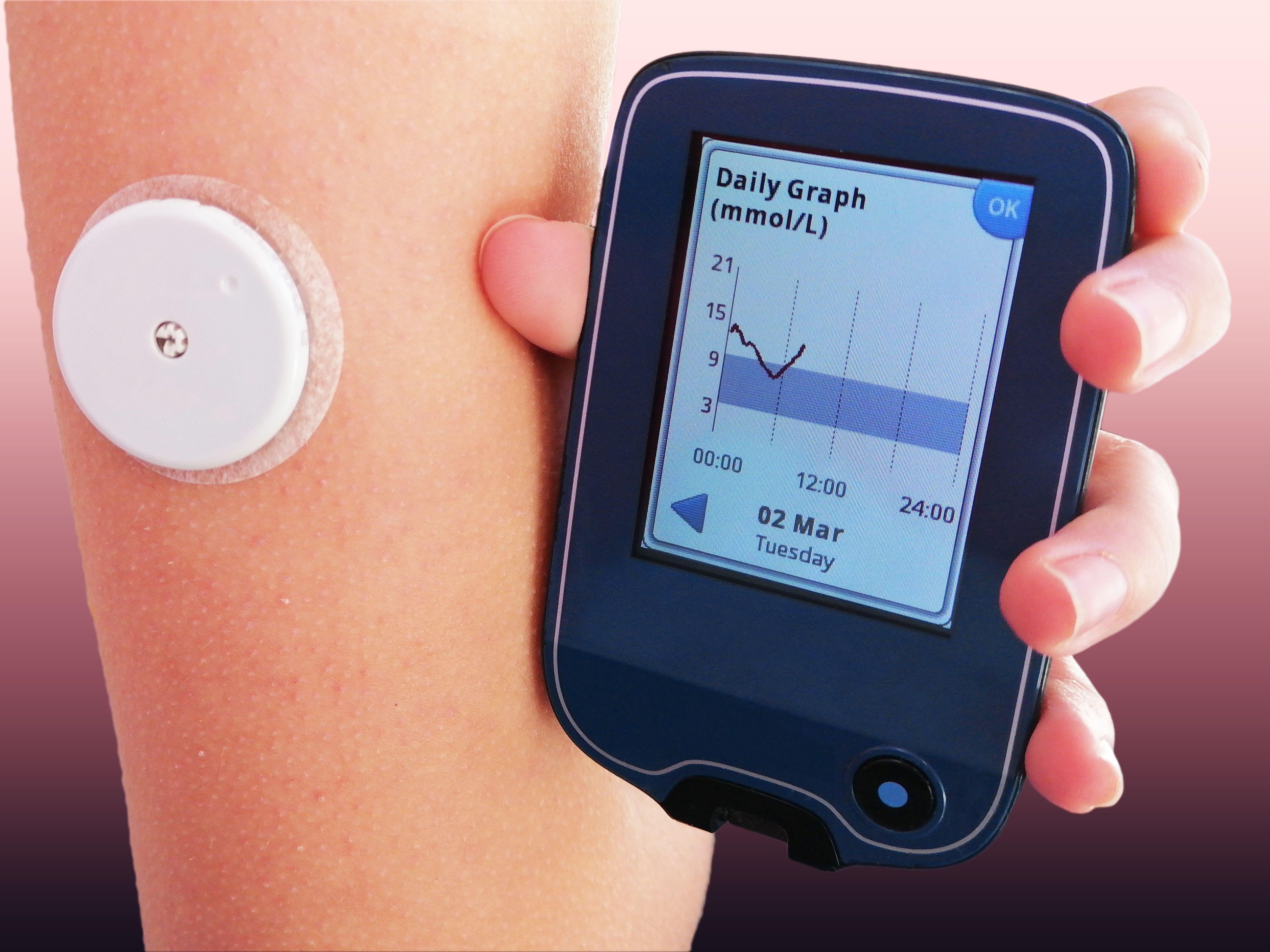
What Causes Blood Sugar to Spike Over 500 mg/dL?
Several factors can trigger such dangerous hyperglycemia:
- Uncontrolled diabetes, especially Type 1 diabetes
- Severely inadequate insulin dosing
- Major illness or infection
- Certain medications like steroids
- Excessive carbohydrate intake
- Extreme physical or emotional stress
In most cases, blood sugar spikes this high due to a combination of factors in someone with diabetes. Their body either cannot produce insulin (Type 1) or use it effectively (Type 2), leading to unchecked glucose accumulation in the bloodstream.
Recognizing Symptoms of Severe Hyperglycemia
As blood sugar climbs to dangerous levels, several symptoms may emerge:
- Extreme thirst and frequent urination
- Fatigue and weakness
- Blurred vision
- Confusion or difficulty concentrating
- Nausea and vomiting
- Abdominal pain
- Fruity-smelling breath (in DKA)
- Rapid breathing
- Dry, flushed skin
These symptoms can progress rapidly, leading to loss of consciousness and diabetic coma if not addressed promptly. Anyone experiencing these signs with known diabetes should check their blood sugar immediately and seek emergency care if levels are extremely elevated.
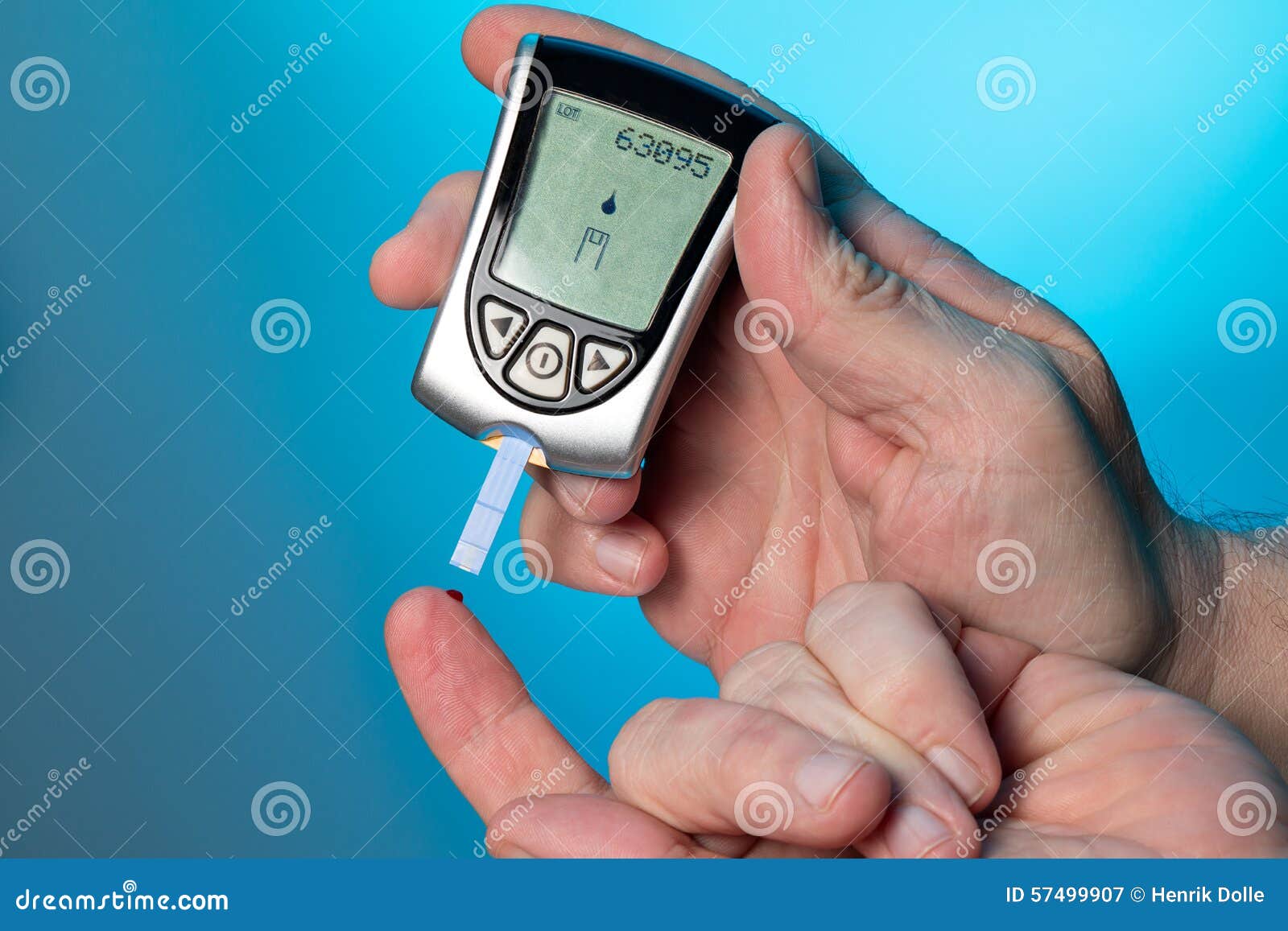
Complications of Untreated 500+ Blood Sugar
Allowing blood glucose to remain at such dangerous levels can lead to severe, potentially life-threatening complications:
Diabetic Ketoacidosis (DKA)
DKA occurs when the body breaks down fat for energy, producing toxic ketones. This can lead to:
- Severe dehydration
- Electrolyte imbalances
- Cerebral edema
- Cardiac arrhythmias
- Kidney failure
Hyperosmolar Hyperglycemic State (HHS)
HHS is characterized by extreme dehydration and can cause:
- Blood clots
- Seizures
- Coma
- Organ failure
Both DKA and HHS have mortality rates between 5-20% if not treated promptly and effectively.
Emergency Treatment for 500+ Blood Sugar
When blood glucose reaches such dangerous levels, immediate hospitalization is necessary. Treatment typically involves:
- Intravenous fluids to combat dehydration
- Insulin therapy to lower blood sugar
- Electrolyte replacement
- Monitoring for complications
- Identifying and treating the underlying cause
The goal is to gradually bring blood sugar back to a safe range while addressing any metabolic imbalances or organ damage. This process may take 24-48 hours of intensive care.

Long-Term Effects of Recurring Severe Hyperglycemia
Repeated episodes of extreme high blood sugar can have lasting consequences on health:
- Cardiovascular disease
- Kidney damage or failure
- Nerve damage (neuropathy)
- Vision problems or blindness
- Increased risk of infections
- Cognitive impairment
These complications underscore the importance of maintaining good blood sugar control through proper diabetes management.
Preventing Dangerously High Blood Sugar
For individuals with diabetes, several strategies can help prevent blood sugar from reaching dangerous levels:
- Regular blood glucose monitoring
- Adhering to prescribed insulin or medication regimens
- Following a balanced diet plan
- Engaging in regular physical activity
- Managing stress effectively
- Staying hydrated
- Working closely with healthcare providers to adjust treatment as needed
Additionally, having a sick day management plan is crucial, as illness can cause rapid blood sugar spikes in people with diabetes.
Understanding Different Types of Diabetes
The risk of experiencing severely high blood sugar varies among different types of diabetes:

Type 1 Diabetes
People with Type 1 diabetes are at highest risk for extreme hyperglycemia and DKA. Their bodies produce no insulin, making them entirely dependent on external insulin administration. Any disruption in insulin therapy can quickly lead to dangerously high blood sugar.
Type 2 Diabetes
While less common, individuals with Type 2 diabetes can also experience severe hyperglycemia, particularly if their condition is poorly controlled or during times of illness or stress. They are more prone to developing HHS than DKA.
Gestational Diabetes
Pregnant women with gestational diabetes rarely experience blood sugar levels as high as 500 mg/dL, but uncontrolled gestational diabetes can lead to complications for both mother and baby.
Understanding the specific type of diabetes and its associated risks is crucial for effective management and prevention of severe hyperglycemic events.
The Role of Continuous Glucose Monitoring
Continuous glucose monitoring (CGM) systems have revolutionized diabetes management, particularly in preventing extreme blood sugar fluctuations. These devices provide real-time glucose readings, allowing for prompt intervention before levels become dangerously high.

Benefits of CGM for Preventing Severe Hyperglycemia
- Early warning of rising blood sugar trends
- Alerts for high glucose levels, even during sleep
- Improved understanding of how food, activity, and medications affect blood sugar
- Data sharing with healthcare providers for better treatment adjustments
While CGM doesn’t replace the need for traditional blood glucose testing in all situations, it provides an additional layer of protection against severe hyperglycemic events.
Educating Patients and Caregivers
Proper education is vital in preventing and managing episodes of severe hyperglycemia. Patients with diabetes and their caregivers should be well-informed about:
- Recognizing early signs of rising blood sugar
- Proper use of blood glucose meters and/or CGM devices
- Correct insulin administration techniques
- When and how to adjust insulin doses
- The importance of regular medical check-ups
- Emergency protocols for extremely high blood sugar
Healthcare providers play a crucial role in this education process, ensuring that patients have the knowledge and tools to manage their diabetes effectively and prevent life-threatening complications.

Research and Future Directions
Ongoing research continues to improve our understanding and management of severe hyperglycemia:
Artificial Pancreas Systems
These closed-loop systems combine CGM with insulin pumps to automatically adjust insulin delivery based on real-time glucose levels, potentially preventing dangerous spikes.
Novel Insulin Formulations
Researchers are developing ultra-rapid-acting insulins and glucose-responsive insulins that could provide more precise blood sugar control.
Improved Treatment Protocols
Studies are refining treatment approaches for DKA and HHS to reduce complications and improve outcomes.
Predictive Analytics
Advanced algorithms are being developed to predict and prevent severe hyperglycemic events based on patterns in CGM data.
These advancements hold promise for reducing the incidence and severity of extreme high blood sugar episodes in the future.
The Psychological Impact of Severe Hyperglycemia
Experiencing a severe hyperglycemic event can have lasting psychological effects on individuals with diabetes:
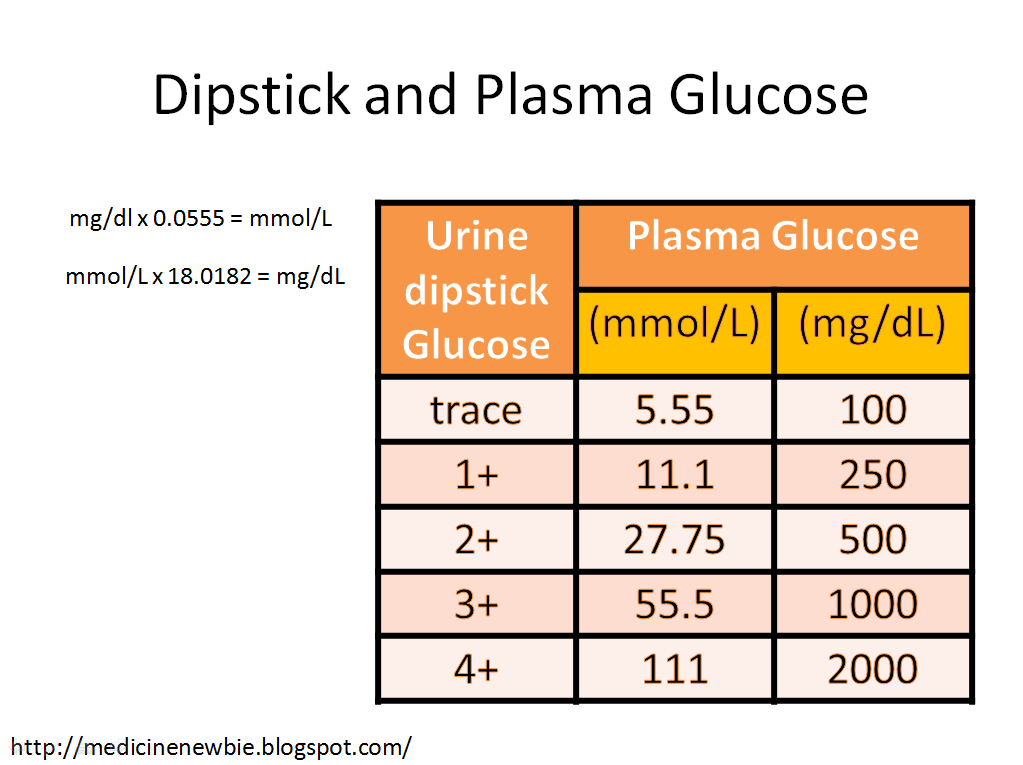
- Increased anxiety about blood sugar management
- Fear of future episodes
- Feelings of guilt or failure
- Depression related to complications or hospitalization
- Post-traumatic stress symptoms in some cases
Addressing these psychological aspects is crucial for comprehensive diabetes care. Mental health support and counseling should be integrated into the treatment plan for individuals who have experienced severe hyperglycemia.
Global Perspectives on Severe Hyperglycemia
The prevalence and management of severe hyperglycemia vary worldwide:
Developed Countries
In nations with advanced healthcare systems, the focus is on prevention through education, technology, and regular medical care. However, disparities in access to care and diabetes education persist.
Developing Countries
Limited access to insulin, blood glucose monitoring supplies, and specialized care increases the risk of severe hyperglycemic events. Public health initiatives are crucial for improving diabetes management in these regions.
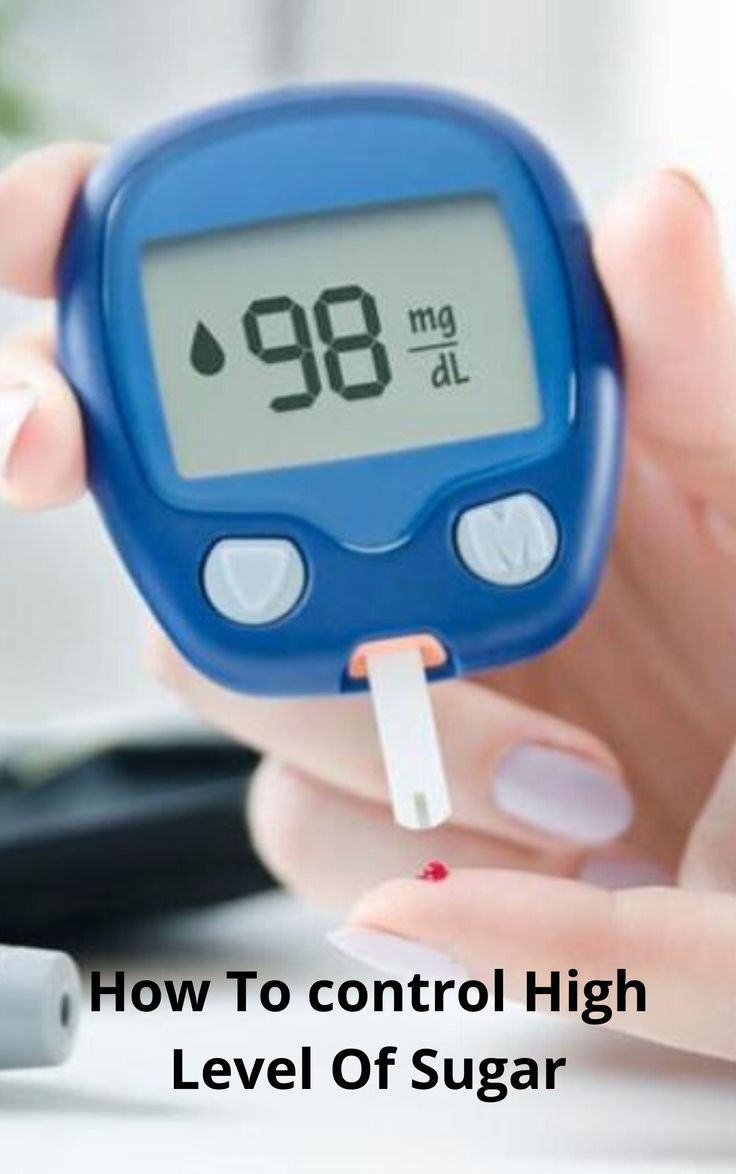
Global Initiatives
Organizations like the World Health Organization (WHO) and International Diabetes Federation (IDF) work to improve diabetes care globally, aiming to reduce the incidence of life-threatening hyperglycemic events.
Understanding these global disparities is essential for developing targeted strategies to reduce the burden of severe hyperglycemia worldwide.
About Blood Glucose Over 500
Glucose is a type of sugar that is found in the bloodstream. Blood glucose is the main energy source of the body. Having a healthy blood glucose or blood sugar level is important to optimal health and survival. As glucose in the blood begins to rise, typically after a meal, the pancreas releases insulin to help the cells of the body use the glucose for fuel and energy. If someone has diabetes, and his pancreas secretes little to no insulin into the bloodstream, the blood sugar levels begin to rise. If not treated properly with an insulin injection, the levels can quickly rise over 500mg. Any blood glucose level over 500mg is considered a medical emergency.
Most people who have had a blood glucose level over 500mg are considered to have diabetes. According to the American Diabetes Association, over 23.6 million people have diabetes. Diabetes is a serious disease that causes unstable blood sugar levels. There are three main types of diabetes; Type 1, Type 2 and gestational diabetes. Type I generally occurs when a patient is young and is sometimes referred to as juvenile diabetes. Type 2 is a condition in which the body does not produce enough insulin to bring blood sugars down, the patient becomes dependent on insulin injections. Gestational diabetes occurs when a woman becomes pregnant. If blood sugar levels are not brought down or treated, it can lead to serious conditions and birth defects that can harm both mother and child.
Type I generally occurs when a patient is young and is sometimes referred to as juvenile diabetes. Type 2 is a condition in which the body does not produce enough insulin to bring blood sugars down, the patient becomes dependent on insulin injections. Gestational diabetes occurs when a woman becomes pregnant. If blood sugar levels are not brought down or treated, it can lead to serious conditions and birth defects that can harm both mother and child.
When a blood glucose level gets over 500mg, one of the first things a doctor will do is determine what is causing the high blood sugar level. Generally, the cause is uncontrolled diabetes. As someone continues to eat foods that may be high in sugar or high in carbohydrate, his blood sugar levels begin to rise over normal levels. If his body does not secrete insulin to bring the levels down or to maintain them between 85mg and 100mg, the glucose will continue to rise. Even if the body is producing a minimal amount of insulin, it may not be enough to bring levels back down to a healthy range, even when the person is not eating.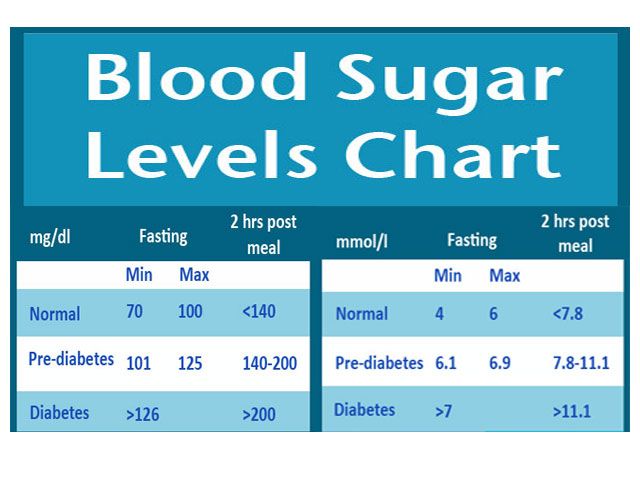 Glucose levels may rise in people with diabetes, if they are sick or have another underlying illness.
Glucose levels may rise in people with diabetes, if they are sick or have another underlying illness.
Two of the symptoms of high blood sugar are extreme thirst and frequent urination. Tiredness, dizziness, blurred vision, confusion and rapid breathing can also be symptoms. If these symptoms suddenly appear in someone who has diabetes, a blood glucose meter is the easiest way to determine if the blood sugar is running high.
The effects of having a consistent blood glucose level over 500mg can be devastating on the body. When diabetes is not properly treated with diet, exercise, oral medication or insulin, diabetes can begin to affect areas of the body. Diabetes can cause complications such as heart disease and stroke, blindness, hypertension, diabetic neuropathy, nerve damage, depression, complications with feet, kidney disease and limb amputation.
The first method of treatment for a blood glucose level over 500mg is to be placed in an emergency room or hospital for effective treatment. The medical staff may give the patient an intravenous line of rapid-acting insulin. There are different types of insulin, such as rapid, short, intermediate, long-acting and a premixed variety. The key is to bring the levels down as quickly as possible and keep them down. The staff will check blood sugar levels with a monitor and blood work until they are regulated and under control.
The medical staff may give the patient an intravenous line of rapid-acting insulin. There are different types of insulin, such as rapid, short, intermediate, long-acting and a premixed variety. The key is to bring the levels down as quickly as possible and keep them down. The staff will check blood sugar levels with a monitor and blood work until they are regulated and under control.
Diabetic Ketoacidosis and Hyperglycemic Hyperosmolar Syndrome
Abstract
In Brief
Diabetic ketoacidosis (DKA) and hyperosmolar hyperglycemic syndrome (HHS) are two acute complications of diabetes that can result in increased morbidity and mortality if not efficiently and effectively treated. Mortality rates are 2–5% for DKA and 15% for HHS, and mortality is usually a consequence of the underlying precipitating cause(s) rather than a result of the metabolic changes of hyperglycemia. Effective standardized treatment protocols, as well as prompt identification and treatment of the precipitating cause, are important factors affecting outcome.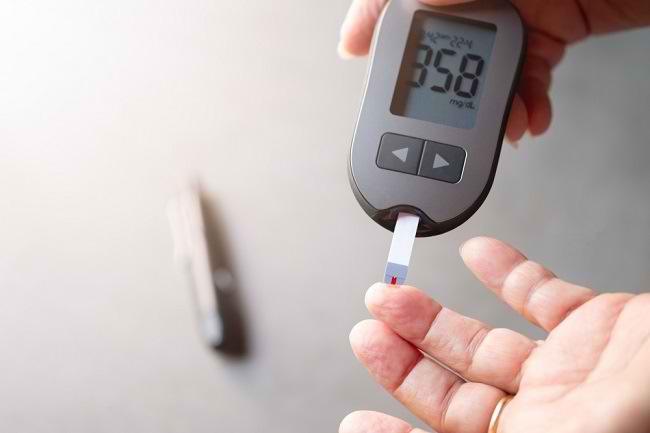
The two most common life-threatening complications of diabetes mellitus include diabetic ketoacidosis (DKA) and hyperglycemic hyperosmolar syndrome (HHS). Although there are important differences in their pathogenesis, the basic underlying mechanism for both disorders is a reduction in the net effective concentration of circulating insulin coupled with a concomitant elevation of counterregulatory hormones (glucagon, catecholamines, cortisol, and growth hormone).
These hyperglycemic emergencies continue to be important causes of morbidity and mortality among patients with diabetes. DKA is reported to be responsible for more than 100,000 hospital admissions per year in the United States1 and accounts for 4–9% of all hospital discharge summaries among patients with diabetes.1 The incidence of HHS is lower than DKA and accounts for <1% of all primary diabetic admissions.1
Most patients with DKA have type 1 diabetes; however, patients with type 2 diabetes are also at risk during the catabolic stress of acute illness.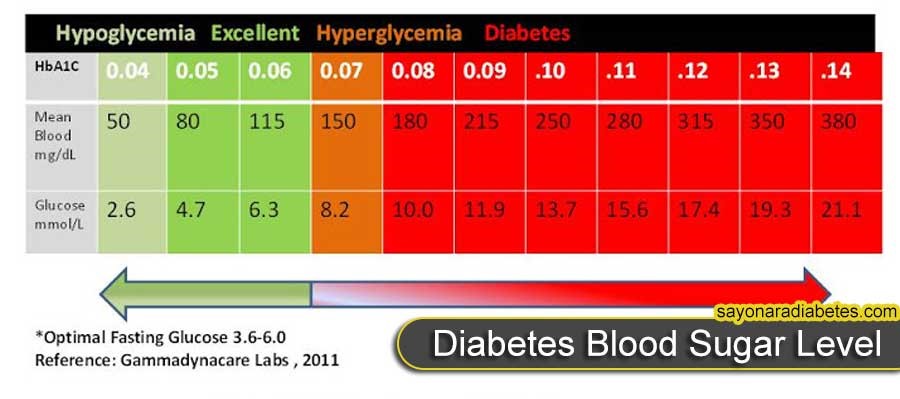 2 Contrary to popular belief, DKA is more common in adults than in children.1 In community-based studies, more than 40% of African-American patients with DKA were >40 years of age and more than 20% were >55 years of age.3 Many of these adult patients with DKA were classified as having type 2 diabetes because 29% of patients were obese, had measurable insulin secretion, and had a low prevalence of autoimmune markers of β-cell destruction.4
2 Contrary to popular belief, DKA is more common in adults than in children.1 In community-based studies, more than 40% of African-American patients with DKA were >40 years of age and more than 20% were >55 years of age.3 Many of these adult patients with DKA were classified as having type 2 diabetes because 29% of patients were obese, had measurable insulin secretion, and had a low prevalence of autoimmune markers of β-cell destruction.4
Treatment of patients with DKA and HHS utilizes significant health care resources. Recently, it was estimated that treatment of DKA episodes accounts for more than one of every four health care dollars spent on direct medical care for adults with type 1 diabetes, and for one of every two dollars for those patients experiencing multiple episodes of DKA.5
Despite major advances in their management, recent series have reported a mortality rate of 2–5% for DKA, and ∼15% for HHS.1,2 DKA is the most common cause of death in children and adolescents with type 1 diabetes and accounts for half of all deaths in diabetic patients <24 years of age. 6
6
The cause of death in patients with DKA and HHS rarely results from the metabolic complications of hyperglycemia or metabolic acidosis but rather relates to the underlying medical illness that precipitated the metabolic decompensation. Thus, successful treatment requires a prompt and careful search for the precipitating cause(s).
This review discusses the pathogenesis, clinical presentation, complications, and recommendations for treatment of DKA and HHS.
PATHOGENESIS
DKA is characterized by hyperglycemia, metabolic acidosis, and increased circulating total body ketone concentration. Ketoacidosis results from the lack of, or ineffectiveness of, insulin with concomitant elevation of counterregulatory hormones (glucagon, catecholamines, cortisol, and growth hormone).7,8 The association of insulin deficiency and increased counterregulatory hormones leads to altered glucose production and disposal and to increased lipolysis and production of ketone bodies. Hyperglycemia results from increased hepatic and renal glucose production (gluconeogenesis and glycogenolysis) and impaired glucose utilization in peripheral tissues. 7 Increased gluconeogenesis results from the high availability of noncarbohydrate substrates (alanine, lactate, and glycerol in the liver and glutamine in the kidney)9 and from the increased activity of gluconeogenic enzymes (phosphoenol pyruvate carboxykinase [PEPCK], fructose-1,6-bisphosphatase, and pyruvate carboxylase). From a quantitative standpoint, increased hepatic glucose production represents the major pathogenic disturbance responsible for hyperglycemia in patients with DKA.7 In addition, both hyperglycemia and high ketone levels cause osmotic diuresis that leads to hypo-volemia and decreased glomerular filtration rate. The latter further aggravates hyperglycemia.
7 Increased gluconeogenesis results from the high availability of noncarbohydrate substrates (alanine, lactate, and glycerol in the liver and glutamine in the kidney)9 and from the increased activity of gluconeogenic enzymes (phosphoenol pyruvate carboxykinase [PEPCK], fructose-1,6-bisphosphatase, and pyruvate carboxylase). From a quantitative standpoint, increased hepatic glucose production represents the major pathogenic disturbance responsible for hyperglycemia in patients with DKA.7 In addition, both hyperglycemia and high ketone levels cause osmotic diuresis that leads to hypo-volemia and decreased glomerular filtration rate. The latter further aggravates hyperglycemia.
The mechanisms that underlie the increased production of ketones have recently been reviewed.8 The combination of insulin deficiency and increased concentration of counterregulatory hormones causes the activation of hormone-sensitive lipase in adipose tissue. The increased activity of tissue lipase causes breakdown of triglyceride into glycerol and free fatty acids (FFA). While glycerol becomes an important substrate for gluconeogenesis in the liver, the massive release of FFA assumes pathophysiological predominance, as they are the hepatic precursors of the ketoacids. In the liver, FFA are oxidized to ketone bodies, a process predominantly stimulated by glucagon. Increased concentration of glucagon lowers the hepatic levels of malonyl coenzyme A (CoA) by blocking the conversion of pyruvate to acetyl CoA through inhibition of acetyl CoA carboxylase, the first rate-limiting enzyme in de novo fatty acid synthesis. Malonyl CoA inhibits carnitine palmitoyl-transferase I (CPT I), the rate-limiting enzyme for transesterification of fatty acyl CoA to fatty acyl carnitine, allowing oxidation of fatty acids to ketone bodies. CPT I is required for movement of FFA into the mitochondria where fatty acid oxidation takes place. The increased activity of fatty acyl CoA and CPT I in DKA leads to accelerated ketogenesis.8
While glycerol becomes an important substrate for gluconeogenesis in the liver, the massive release of FFA assumes pathophysiological predominance, as they are the hepatic precursors of the ketoacids. In the liver, FFA are oxidized to ketone bodies, a process predominantly stimulated by glucagon. Increased concentration of glucagon lowers the hepatic levels of malonyl coenzyme A (CoA) by blocking the conversion of pyruvate to acetyl CoA through inhibition of acetyl CoA carboxylase, the first rate-limiting enzyme in de novo fatty acid synthesis. Malonyl CoA inhibits carnitine palmitoyl-transferase I (CPT I), the rate-limiting enzyme for transesterification of fatty acyl CoA to fatty acyl carnitine, allowing oxidation of fatty acids to ketone bodies. CPT I is required for movement of FFA into the mitochondria where fatty acid oxidation takes place. The increased activity of fatty acyl CoA and CPT I in DKA leads to accelerated ketogenesis.8
Studies in animals and humans with diabetes have shown that lower insulin levels are needed for antilipolysis than for peripheral glucose uptake.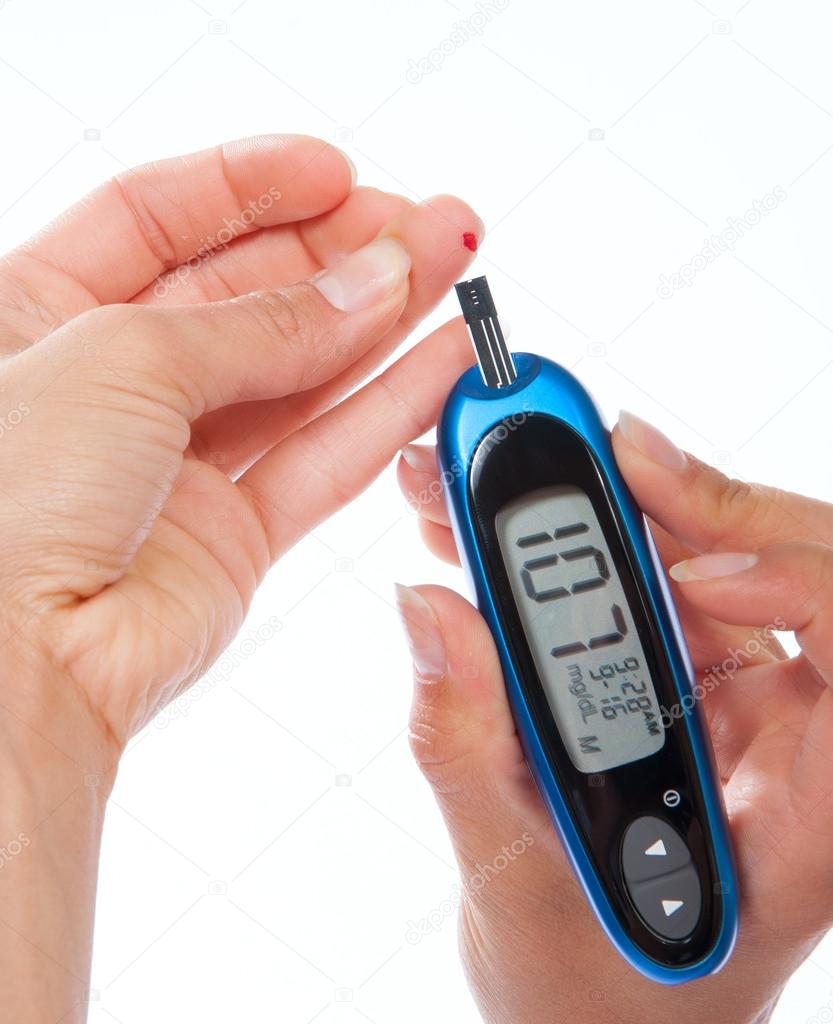 10,11 HHS is characterized by a relative deficiency of insulin concentration to maintain normoglycemia but adequate levels to prevent lipolysis and ketogenesis.11 To date, very few studies have been performed comparing differences in counterregulatory response in DKA versus HHS. Patients with HHS have been reported to have higher insulin concentration (demonstrated by basal and stimulated C-peptide levels),12 and reduced concentrations of FFA, cortisol, growth hormone, and glucagon compared to patients with DKA.12–14 However, one study reported similar levels of FFA in patients with DKA and HHS,12 indicating that further studies are needed to characterize metabolic responses in such patients.
10,11 HHS is characterized by a relative deficiency of insulin concentration to maintain normoglycemia but adequate levels to prevent lipolysis and ketogenesis.11 To date, very few studies have been performed comparing differences in counterregulatory response in DKA versus HHS. Patients with HHS have been reported to have higher insulin concentration (demonstrated by basal and stimulated C-peptide levels),12 and reduced concentrations of FFA, cortisol, growth hormone, and glucagon compared to patients with DKA.12–14 However, one study reported similar levels of FFA in patients with DKA and HHS,12 indicating that further studies are needed to characterize metabolic responses in such patients.
PRECIPITATING CAUSES
DKA is the initial manifestation of diabetes in 20% of adult patients1 and 30–40% of children15,16 with type 1 diabetes. In patients with established diabetes, precipitating factors for DKA include infections, intercurrent illnesses, psychological stress, and poor compliance with therapy.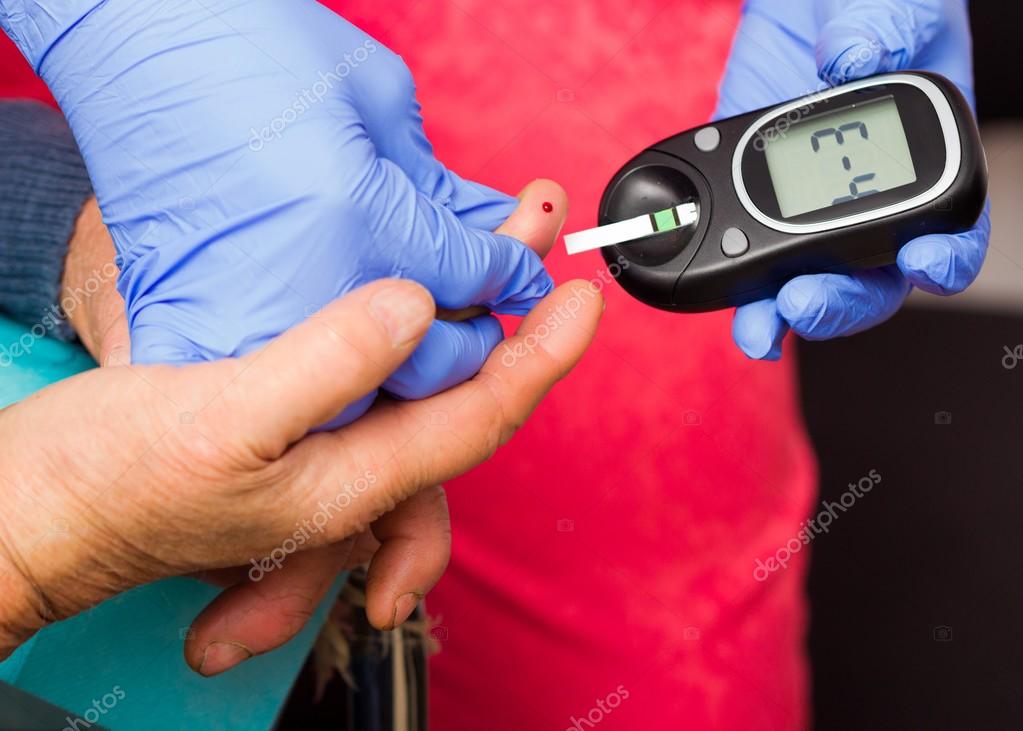 Infection is the most common precipitating factor for DKA, occurring in 30–50% of cases. Urinary tract infection and pneumonia account for the majority of infections. Other acute conditions that may precipitate DKA include cerebrovascular accident, alcohol/drug abuse, pancreatitis, pulmonary embolism, myocardial infarction, and trauma. Drugs that affect carbohydrate metabolism, such as corticosteroids, thiazides, sympathomimetic agents, and pentamidine, may also precipitate the development of DKA.
Infection is the most common precipitating factor for DKA, occurring in 30–50% of cases. Urinary tract infection and pneumonia account for the majority of infections. Other acute conditions that may precipitate DKA include cerebrovascular accident, alcohol/drug abuse, pancreatitis, pulmonary embolism, myocardial infarction, and trauma. Drugs that affect carbohydrate metabolism, such as corticosteroids, thiazides, sympathomimetic agents, and pentamidine, may also precipitate the development of DKA.
Recent studies have emphasized the importance of noncompliance and psychological factors in the incidence of DKA. In a survey of 341 female patients with type 1 diabetes,17 it was reported that psychological problems complicated by eating disorders were a contributing factor in 20% of recurrent ketoacidosis in young women. More recently, it was reported that up to one-third of young women with type 1 diabetes have eating disturbances,18 which affect the management of diabetes and increase the risk of microvascular complications. Factors that may lead to insulin omission in young subjects included fear of gaining weight with good metabolic control, fear of hypoglycemia, rebellion from authority, and diabetes-related stress. Noncompliance with therapy has also been reported to be a major precipitating cause for DKA in urban black and medically indigent patients. A recent study reported that in urban black patients, poor compliance with insulin accounted for more than 50% of DKA cases admitted to a major urban hospital.3
Factors that may lead to insulin omission in young subjects included fear of gaining weight with good metabolic control, fear of hypoglycemia, rebellion from authority, and diabetes-related stress. Noncompliance with therapy has also been reported to be a major precipitating cause for DKA in urban black and medically indigent patients. A recent study reported that in urban black patients, poor compliance with insulin accounted for more than 50% of DKA cases admitted to a major urban hospital.3
Most patients with HHS have type 2 diabetes. HHS is the initial manifestation of diabetes in 7–17% of patients.1,3 Infection is the major precipitating factor, occurring in 30–60% of patients, with urinary tract infections and pneumonia being the most common infections.19 In many instances, an acute illness, such as cerebrovascular accident or myocardial infarction, provokes the release of counterregulatory hormones, resulting in hyperglycemia. Furthermore, in many cases, the patient or caregiver is unaware of the signs and symptoms of decompensated diabetes, or the patient is unable to treat the progressive dehydration. Certain medications that cause DKA may also precipitate the development of HHS, including glucocorticoids, thiazide diuretics, dilantin, and β-blockers.
Certain medications that cause DKA may also precipitate the development of HHS, including glucocorticoids, thiazide diuretics, dilantin, and β-blockers.
DIAGNOSIS
Symptoms and Signs
The clinical presentation of DKA usually develops rapidly, over a period of <24 hours. Polyuria, polydipsia, and weight loss may be present for several days before the development of ketoacidosis, and vomiting and abdominal pain are frequently the presenting symptoms. Abdominal pain, sometimes mimicking an acute abdomen, is reported in 40–75% of cases of DKA.20 In our institution, we have observed that the presence of abdominal pain is associated with a more severe metabolic acidosis and with a history of alcohol or cocaine abuse, but not with the severity of hyperglycemia or dehydration. Although the potential of an acute abdominal problem requiring surgical intervention should not be overlooked, in the majority of patients, the abdominal pain spontaneously resolves after correction of the metabolic disturbance.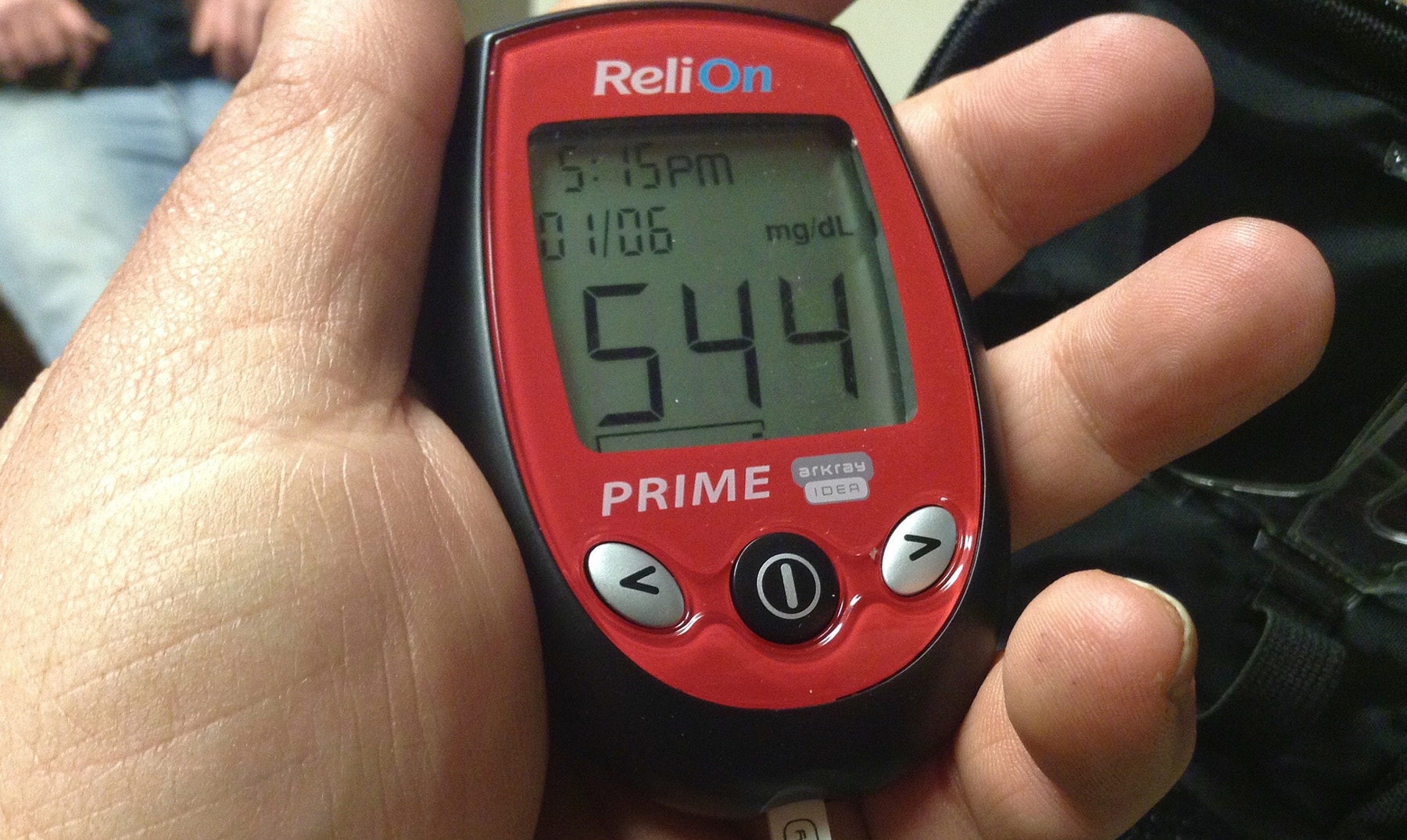
Physical examination reveals signs of dehydration, including loss of skin turgor, dry mucous membranes, tachycardia, and hypotension. Mental status can vary from full alertness to profound lethargy; however, <20% of patients are hospitalized with loss of consciousness.2,21 Most patients are normothermic or even hypothermic at presentation. Acetone on breath and labored Kussmaul respiration may also be present on admission, particularly in patients with severe metabolic acidosis.
Typical patients with HHS have undiagnosed diabetes, are between 55 and 70 years of age, and frequently are nursing home residents. Most patients who develop HHS do so over days to weeks during which they experience polyuria, polydipsia, and progressive decline in the level of consciousness. The most common clinical presentation for patients with HHS is altered sensorium.19
Physical examination reveals signs of volume depletion. Fever due to underlying infection is common, and signs of acidosis (Kussmaul respiration, acetone breath) are usually absent. Gastrointestinal manifestations (abdominal pain, vomiting) frequently reported in patients with DKA are not typically present in HHS. Thus, the presence of abdominal pain in patients without significant metabolic acidosis needs to be investigated. In some patients, focal neurological signs (hemiparesis, hemianopsia) and seizures (partial motor seizures more common than generalized) may be the dominant clinical features, resulting in a common misdiagnosis of stroke.21 Despite the focal nature of neurological findings, these manifestations often reverse completely after correction of the metabolic disorder.
Gastrointestinal manifestations (abdominal pain, vomiting) frequently reported in patients with DKA are not typically present in HHS. Thus, the presence of abdominal pain in patients without significant metabolic acidosis needs to be investigated. In some patients, focal neurological signs (hemiparesis, hemianopsia) and seizures (partial motor seizures more common than generalized) may be the dominant clinical features, resulting in a common misdiagnosis of stroke.21 Despite the focal nature of neurological findings, these manifestations often reverse completely after correction of the metabolic disorder.
Laboratory Findings
Although the diagnoses of DKA and HHS can be suspected on clinical grounds, confirmation is based on laboratory tests. The syndrome of DKA consists of the triad of hyperglycemia, hyperketonemia, and metabolic acidosis.
In the past, the most widely used diagnostic criteria for DKA included a blood glucose level >250 mg/dl, a moderate degree of ketonemia, serum bicarbonate <15 mEq/l, arterial pH <7. 3, and an increased anion gap metabolic acidosis. Although these criteria served well for research purposes, they have significant limitations in clinical practice because the majority of patients with DKA present with mild metabolic acidosis despite elevated serum glucose and β-hydroxybutyrate concentrations. Thus, the biochemical criteria for diagnosis were recently modified.2 Table 1 summarizes the biochemical criteria for the diagnosis and empirical subclassification of DKA and HHS.
3, and an increased anion gap metabolic acidosis. Although these criteria served well for research purposes, they have significant limitations in clinical practice because the majority of patients with DKA present with mild metabolic acidosis despite elevated serum glucose and β-hydroxybutyrate concentrations. Thus, the biochemical criteria for diagnosis were recently modified.2 Table 1 summarizes the biochemical criteria for the diagnosis and empirical subclassification of DKA and HHS.
The diagnostic criteria for HHS include a plasma glucose concentration >600 mg/dl, a serum osmolality >320 mOsm/kg of water, and the absence of significant ketoacidosis. Although by definition patients with HHS have a serum pH >7.3, a serum bicarbonate >18 mEq/l, and negative ketone bodies in urine and plasma, mild ketonemia may be present. Approximately 50% of patients with HHS have an increased anion gap metabolic acidosis as the result of concomitant ketoacidosis and/or an increase in serum lactate levels.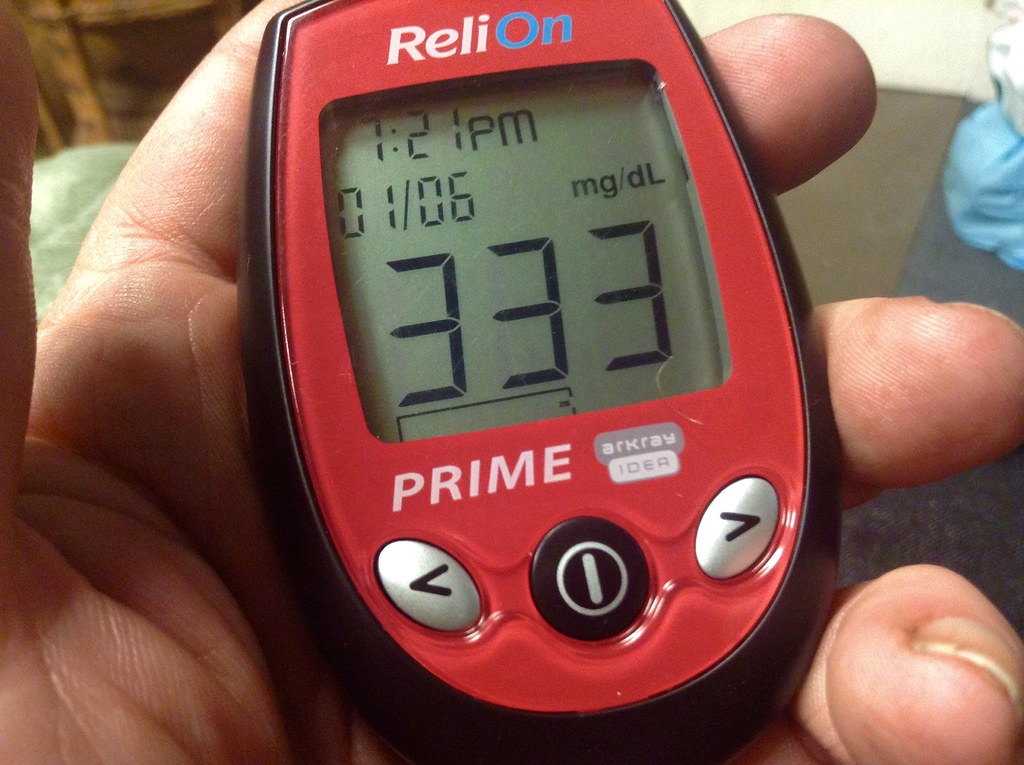 2
2
The assessment of ketonemia, the key diagnostic feature of ketoacidosis, is usually performed by the nitroprusside reaction. However, clinicians should be aware that the nitroprusside reaction provides a semiquantitative estimation of acetoacetate and acetone levels but does not recognize the presence of β-hydroxybutyrate, which is the main ketoacid in DKA. Therefore, this test may underestimate the level of ketosis. Direct measurement of β-hydroxybutyrate is now available by fingerstick method, which is a more accurate indicator of ketoacidosis.
Common Laboratory Pitfalls
Patients with DKA frequently present with leukocytosis in the absence of infection. However, a leukocyte count >25,000 mm3 or the presence of >10% neutrophil bands is seldom seen in the absence of bacterial infection.22 The admission serum sodium is usually low because of the osmotic flux of water from the intracellular to the extracellular space in the presence of hyperglycemia. To assess the severity of sodium and water deficit, serum sodium may be corrected by adding 1.6 mg/dl to the measured serum sodium for each 100 mg/dl of glucose above 100 mg/dl. An increase in serum sodium concentration in the presence of hyperglycemia indicates a rather profound degree of water loss. Extreme hypertriglyceridemia, which may be present during DKA due to impaired lipoprotein lipase activity, may cause lipemic serum with spurious lowering of serum glucose (pseudonormoglycemia)23 and serum sodium (pseudohyponatremia)24 in laboratories still using volumetric testing or dilution of samples with ion-specific electrodes.
To assess the severity of sodium and water deficit, serum sodium may be corrected by adding 1.6 mg/dl to the measured serum sodium for each 100 mg/dl of glucose above 100 mg/dl. An increase in serum sodium concentration in the presence of hyperglycemia indicates a rather profound degree of water loss. Extreme hypertriglyceridemia, which may be present during DKA due to impaired lipoprotein lipase activity, may cause lipemic serum with spurious lowering of serum glucose (pseudonormoglycemia)23 and serum sodium (pseudohyponatremia)24 in laboratories still using volumetric testing or dilution of samples with ion-specific electrodes.
The admission serum potassium concentration is usually elevated in patients with DKA. In a recent series,3 the mean serum potassium in patients with DKA and those with HHS was 5.6 and 5.7 mEq/l, respectively. These high levels occur because of a shift of potassium from the intracellular to the extracellular space due to acidemia, insulin deficiency, and hypertonicity.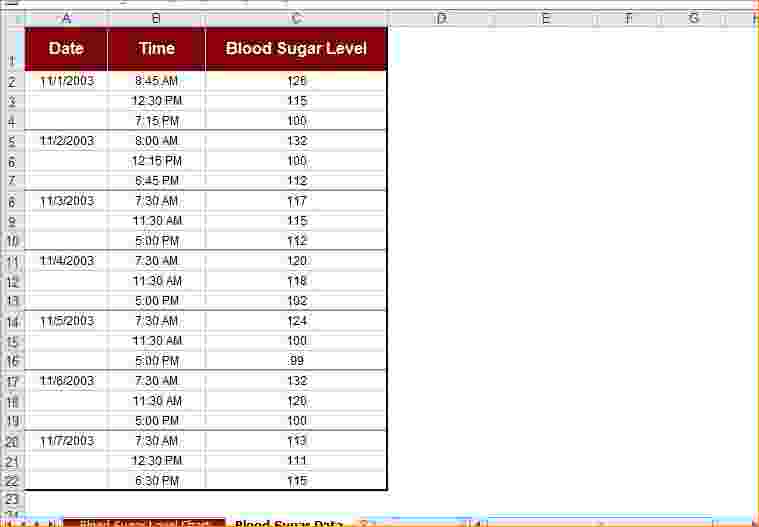 Similarly, the admission serum phosphate level may be normal or elevated because of metabolic acidosis. Dehydration also can lead to increases in total serum protein, albumin, amylase, and creatine phospho-kinase concentration in patients with acute diabetic decompensation. Finally, serum creatinine, which is measured by a colorimetric method, may be falsely elevated as a result of interference by blood acetoacetate levels.25
Similarly, the admission serum phosphate level may be normal or elevated because of metabolic acidosis. Dehydration also can lead to increases in total serum protein, albumin, amylase, and creatine phospho-kinase concentration in patients with acute diabetic decompensation. Finally, serum creatinine, which is measured by a colorimetric method, may be falsely elevated as a result of interference by blood acetoacetate levels.25
Clinicians should remember that not all patients who present with ketoacidosis have DKA. Patients with chronic ethanol abuse with a recent binge culminating in nausea, vomiting, and acute starvation may present with alcoholic ketoacidosis. The key diagnostic feature that differentiates diabetic and alcohol-induced ketoacidosis is the concentration of blood glucose.26 While DKA is characterized by severe hyperglycemia, the presence of ketoacidosis without hyperglycemia in an alcoholic patient is virtually diagnostic of alcoholic ketoacidosis. In addition, some patients with decreased food intake (<500 kcal/day) for several days may present with starvation ketosis.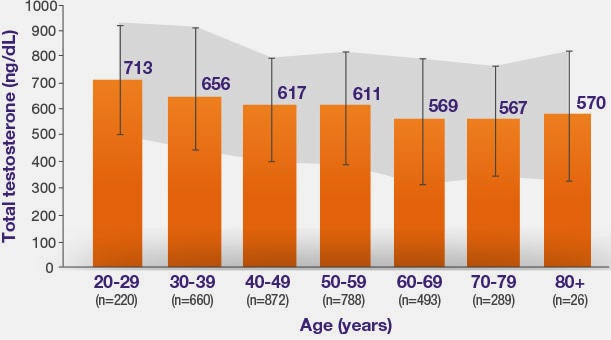 However, a healthy subject is able to adapt to prolonged fasting by increasing ketone clearance by peripheral tissue (brain and muscle) and by enhancing the kidney’s ability to excrete ammonia to compensate for the increased acid production. Therefore, a patient with starvation ketosis rarely presents with a serum bicarbonate concentration <18 mEq/l.
However, a healthy subject is able to adapt to prolonged fasting by increasing ketone clearance by peripheral tissue (brain and muscle) and by enhancing the kidney’s ability to excrete ammonia to compensate for the increased acid production. Therefore, a patient with starvation ketosis rarely presents with a serum bicarbonate concentration <18 mEq/l.
TREATMENT
Figures 1 and 2 show the recommended algorithm suggested by the recent American Diabetes Association position statement on treatment of DKA and HHS.27 In general, treatment of DKA and HHS requires frequent monitoring of patients, correction of hypovolemia and hyperglycemia, replacement of electrolyte losses, and careful search for the precipitating cause(s). A flow sheet is invaluable for recording vital signs, volume and rate of fluid administration, insulin dosage, and urine output and to assess the efficacy of medical therapy. In addition, frequent laboratory monitoring is important to assess response to treatment and to document resolution of hyperglycemia and/or metabolic acidosis. Serial laboratory measurements include glucose and electrolytes and, in patients with DKA, venous pH, bicarbonate, and anion gap values until resolution of hyperglycemia and metabolic acidosis.
Serial laboratory measurements include glucose and electrolytes and, in patients with DKA, venous pH, bicarbonate, and anion gap values until resolution of hyperglycemia and metabolic acidosis.
Fluid Therapy
Patients with DKA and HHS are invariably volume depleted, with an estimated water deficit of ∼100 ml/kg of body weight.28 The initial fluid therapy is directed toward expansion of intravascular volume and restoration of renal perfusion. Isotonic saline (0.9% NaCl) infused at a rate of 500–1,000 mL/h during the first 2 h is usually adequate, but in patients with hypovolemic shock, a third or fourth liter of isotonic saline may be needed to restore normal blood pressure and tissue perfusion.
After intravascular volume depletion has been corrected, the rate of normal saline infusion should be reduced to 250 mL/h or changed to 0.45% saline (250–500 mL/h) depending on the serum sodium concentration and state of hydration. The goal is to replace half of the estimated water deficit over a period of 12–24 h.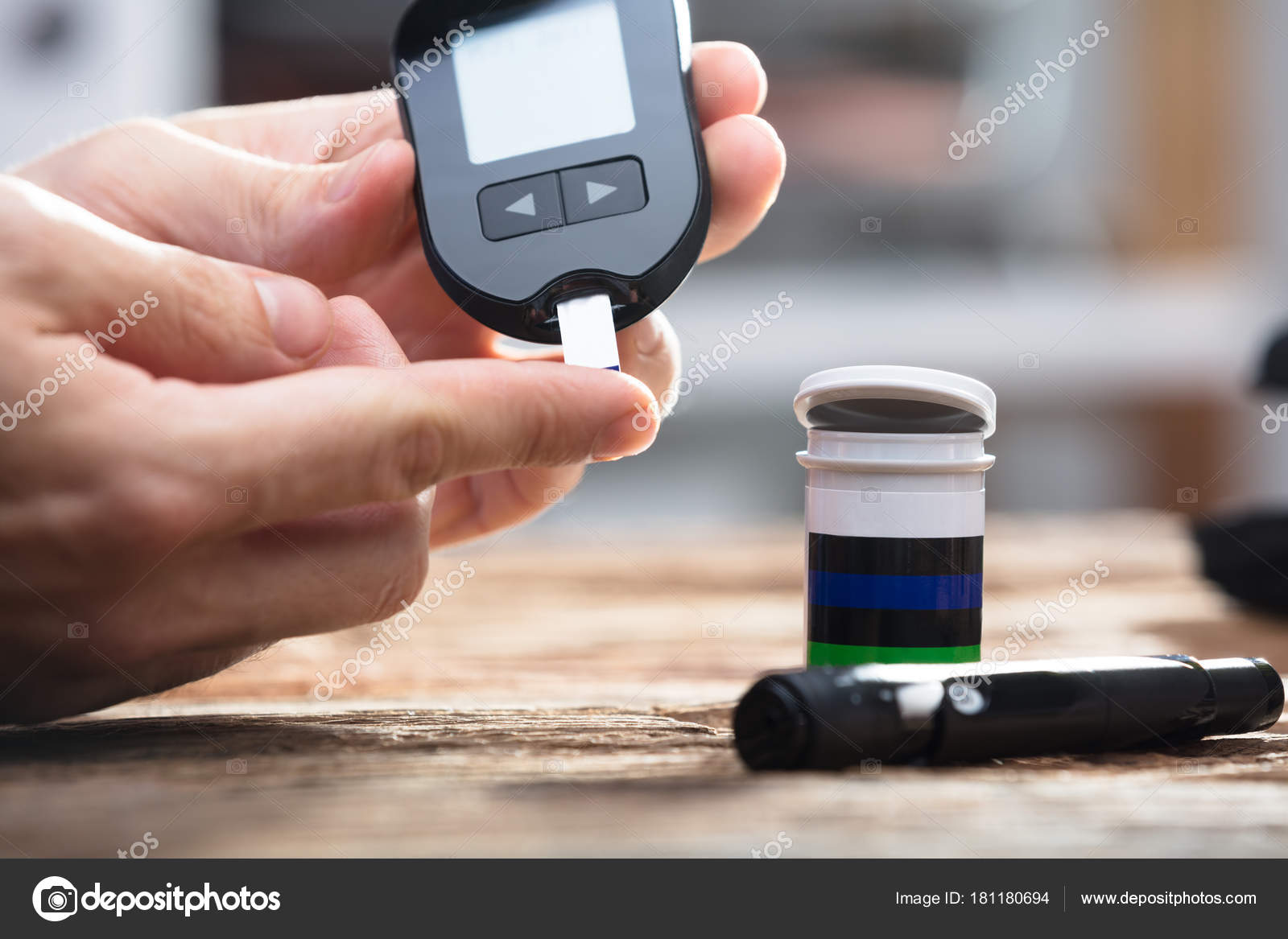 See Table 2 for typical total body deficits of water and electrolytes in DKA and HHS.
See Table 2 for typical total body deficits of water and electrolytes in DKA and HHS.
Once the plasma glucose reaches 250 mg/dl in DKA and 300 mg/dl in HHS, replacement fluids should contain 5–10% dextrose to allow continued insulin administration until ketonemia is controlled while avoiding hypoglycemia.2 An additional important aspect of fluid management in hyperglycemic states is to replace the volume of urinary losses. Failure to adjust fluid replacement for urinary losses may delay correction of electrolytes and water deficit.
Insulin Therapy
The cornerstone of DKA and HHS management is insulin therapy. Prospective randomized studies have clearly established the superiority of low-dose insulin therapy in that smaller doses of insulin result in less hypoglycemia and hypokalemia.29,30 Insulin increases peripheral glucose utilization and decreases hepatic glucose production, thereby lowering blood glucose concentration. In addition, insulin therapy inhibits the release of FFAs from adipose tissue and decreases ketogenesis, both of which lead to the reversal of ketogenesis.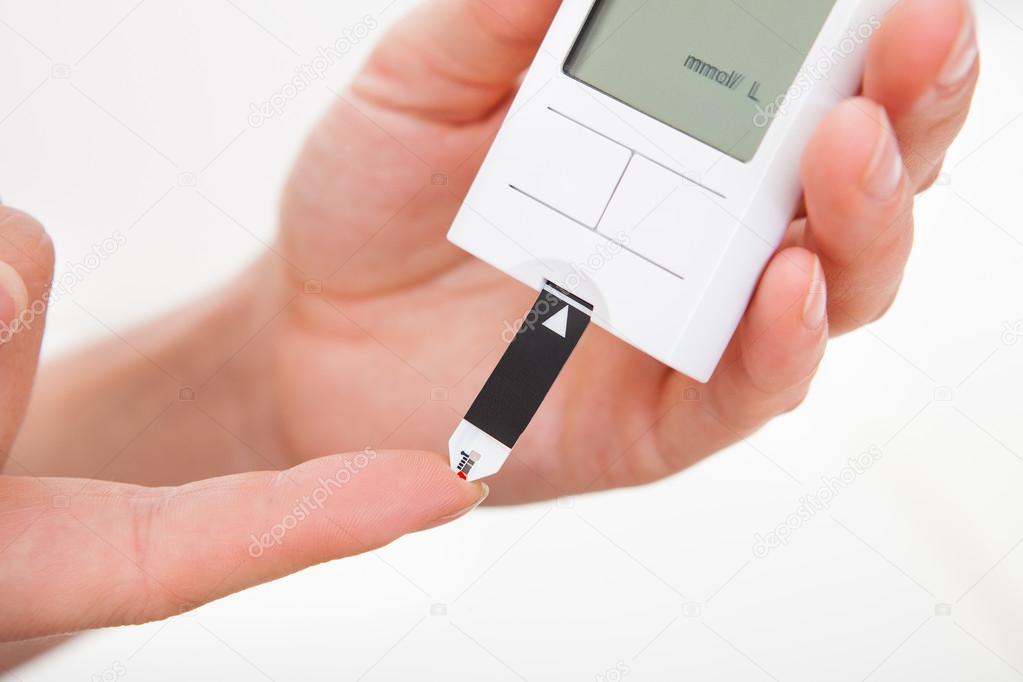
In critically ill and mentally obtunded patients, regular insulin given intravenously by continuous infusion is the treatment of choice. Such patients should be admitted to an intensive care unit or to a step down unit where adequate nursing care and quick turnaround of laboratory tests results are available. An initial intravenous bolus of regular insulin of 0.15 unit/kg of body weight, followed by a continuous infusion of regular insulin at a dose of 0.1 unit/kg/h (5–10 unit/h) should be administered. This will result in a fairly predictable decrease in plasma glucose concentration at a rate of 65–125 mg/h.31
When plasma glucose levels reach 250 mg/dl in DKA or 300 mg/dl in HHS, the insulin infusion rate is reduced to 0.05 unit/kg/h (3–5 units/h), and dextrose (5–10%) should be added to intravenous fluids. Thereafter, the rate of insulin administration may need to be adjusted to maintain the above glucose values until ketoacidosis or mental obtundation and hyperosmolality are resolved.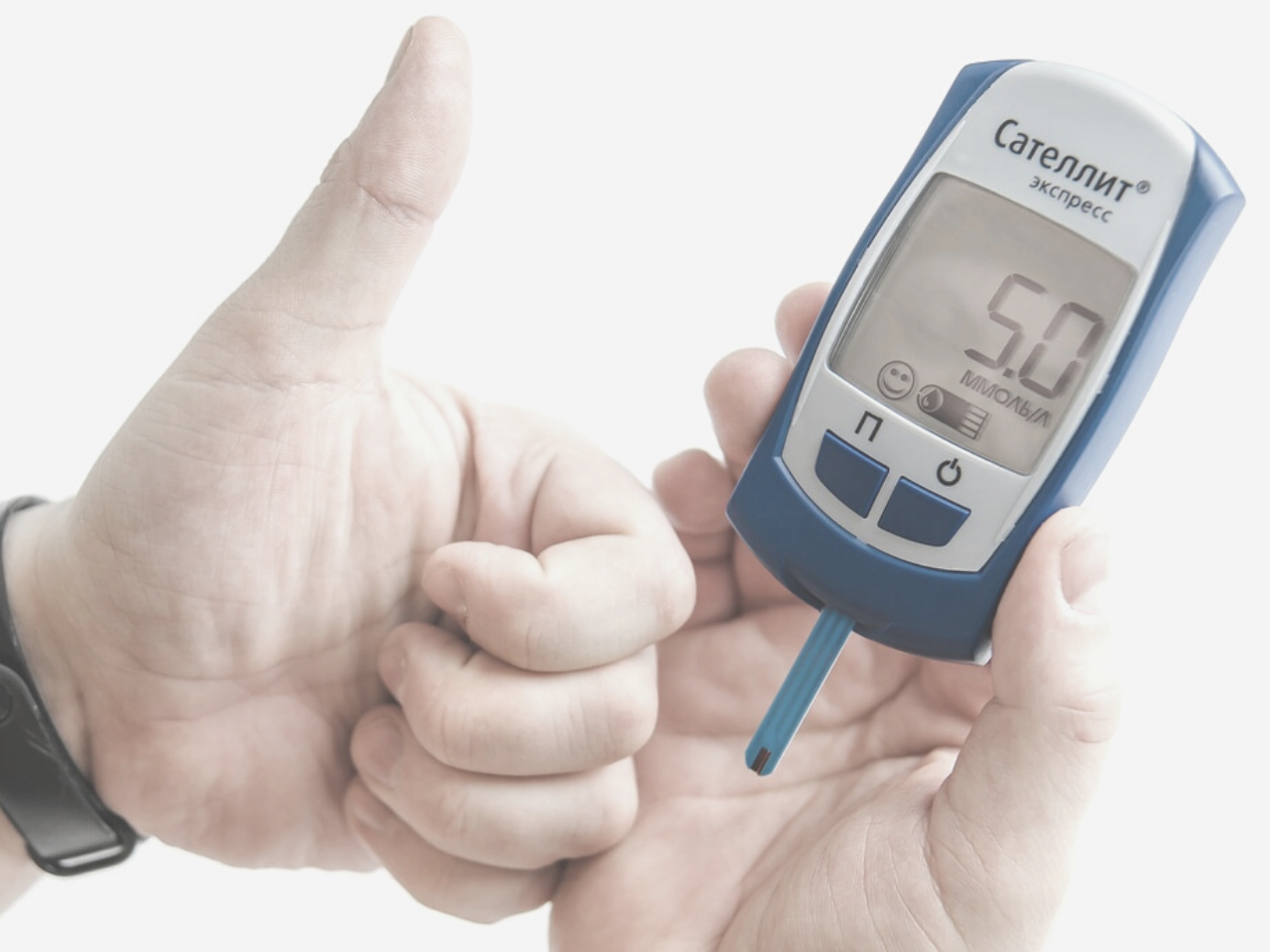 During therapy, capillary blood glucose should be determined every 1–2 hours at the bedside using a glucose oxidase reagent strip. Blood should be drawn every 2–4 h for determination of serum electrolytes, glucose, blood urea nitrogen, creatinine, magnesium, phosphorus, and venous pH.
During therapy, capillary blood glucose should be determined every 1–2 hours at the bedside using a glucose oxidase reagent strip. Blood should be drawn every 2–4 h for determination of serum electrolytes, glucose, blood urea nitrogen, creatinine, magnesium, phosphorus, and venous pH.
A conscious patient with mild DKA could be admitted to a general hospital ward. In such patients, the administration of regular insulin every 1–2 h by subcutaneous or intramuscular route has been shown to be as effective in lowering blood glucose and ketone bodies concentration as giving the entire insulin dose by intravenous infusion.32,33 Furthermore, it has been shown that the addition of albumin in the infusate was not necessary to prevent adsorption of insulin to the IV tubing or bag.33 Such patients should receive the recommended hydrating solution and an initial “priming” dose of regular insulin of 0.4 unit/kg of body weight, given half as intravenous bolus and half as a subcutaneous or intramuscular injection (Figures 1 and 2). The effectiveness of intramuscular or subcutaneous administration has been shown to be similar; however, subcutaneous injections are easier and less painful.
The effectiveness of intramuscular or subcutaneous administration has been shown to be similar; however, subcutaneous injections are easier and less painful.
Potassium
Despite a total body potassium deficit of ∼3–5 mEq/kg of body weight, most patients with DKA have a serum potassium level at or above the upper limits of normal.2 These high levels occur because of a shift of potassium from the intracellular to the extracellular space due to acidemia, insulin deficiency, and hypertonicity. Both insulin therapy and correction of acidosis decrease serum potassium levels by stimulating cellular potassium uptake in peripheral tissues. Therefore, to prevent hypokalemia, most patients require intravenous potassium during the course of DKA therapy. Replace-ment with intravenous potassium (two-thirds as potassium chloride [KCl] and one-third as potassium phosphate [KPO4]) should be initiated as soon as the serum potassium concentration is below 5.0 mEq/L. The treatment goal is to maintain serum potassium levels within the normal range of 4–5 mEq/L.
In some hyperglycemic patients with severe potassium deficiency, insulin administration may precipitate profound hypokalemia,34 which can induce life-threatening arrhythmias and respiratory muscle weakness. Thus, if the initial serum potassium is lower than 3.3 mEq/L, potassium replacement should begin immediately by an infusion of KCl at a rate of 40 mEq/h, and insulin therapy should be delayed until serum potassium is ≥3.3 mEq/L (Figure 1).
Bicarbonate
Bicarbonate administration in patients with DKA remains controversial. Severe metabolic acidosis can lead to impaired myocardial contractility, cerebral vasodilatation and coma, and several gastrointestinal complications. However, rapid alkalinization may result in hypokalemia, paradoxical central nervous system acidosis, and worsened intracellular acidosis (as a result of increased carbon dioxide production) with resultant alkalosis. Controlled studies have failed to show any benefit from bicarbonate therapy in patients with DKA with an arterial pH between 6. 9 and 7.1.35 However, most experts in the field recommend bicarbonate replacement in patients with a pH <7.0. In patients with DKA with arterial pH ≥7.0, or in patients with HHS, bicarbonate therapy is not recommended.2 See Figures 1 and 2 for dosing guidelines.
9 and 7.1.35 However, most experts in the field recommend bicarbonate replacement in patients with a pH <7.0. In patients with DKA with arterial pH ≥7.0, or in patients with HHS, bicarbonate therapy is not recommended.2 See Figures 1 and 2 for dosing guidelines.
Phosphate
Total body phosphate deficiency is universally present in patients with DKA, but its clinical relevance and benefits of replacement therapy remain uncertain. Several studies have failed to show any beneficial effect of phosphate replacement on clinical outcome.36 Furthermore, aggressive phosphate therapy is potentially hazardous, as indicated in case reports of children with DKA who developed hypocalcemia and tetany secondary to intravenous phosphate administration.37 Theoretical advantages of phosphate therapy include prevention of respiratory depression and generation of erythrocyte 2,3-diphosphoglycerate.
Because of these potential benefits, careful phosphate replacement may be indicated in patients with cardiac dysfunction, anemia, respiratory depression, and in those with serum phosphate concentration lower than 1. 0–1.5 mg/dl. If phosphate replacement is needed, it should be administered as a potassium salt, by giving half as KPO4 and half as KCl. In such patients, because of the risk of hypocalcemia, serum calcium and phosphate levels must be monitored during phosphate infusion.
0–1.5 mg/dl. If phosphate replacement is needed, it should be administered as a potassium salt, by giving half as KPO4 and half as KCl. In such patients, because of the risk of hypocalcemia, serum calcium and phosphate levels must be monitored during phosphate infusion.
TRANSITION TO SUBCUTANEOUS INSULIN
Patients with moderate to severe DKA should be treated with continuous intravenous insulin until ketoacidosis is resolved. Criteria for resolution of ketoacidosis include a blood glucose <200 mg/dl, a serum bicarbonate level ≥18 mEq/L, a venous pH >7.3, and a calculated anion gap ≤12 mEq/L. The criteria for resolution of HHS include improvement of mental status, blood glucose <300 mg/dL, and a serum osmolality of <320 mOsm/kg.
When these levels are reached, subcutaneous insulin therapy can be started. If patients are able to eat, split-dose therapy with both regular (short-acting) and intermediate-acting insulin may be given. It is easier to make this transition in the morning before breakfast or at dinnertime.
Patients with known diabetes may be given insulin at the dosage they were receiving before the onset of DKA. In patients with newly diagnosed diabetes, an initial insulin dose of 0.6 unit/kg/day is usually sufficient to achieve and maintain metabolic control. Two-thirds of this total daily dose should be given in the morning and one-third in the evening as a split-mixed dose. If patients are not able to eat, intravenous insulin should be continued while an infusion of 5% dextrose in half-normal saline is given at a rate of 100–200 mL/h.
A critical element to avoid recurrence of hyperglycemia or ketoacidosis during the transition period to subcutaneous insulin is to allow a 1- or 2-h overlap of intravenous insulin infusion during the initiation of subcutaneous regular insulin to ensure adequate plasma insulin levels.
COMPLICATIONS
Hypoglycemia is the most common complication during insulin infusion. Despite the use of low-dose insulin protocols, hypoglycemia is still reported in 10–25% of patients with DKA.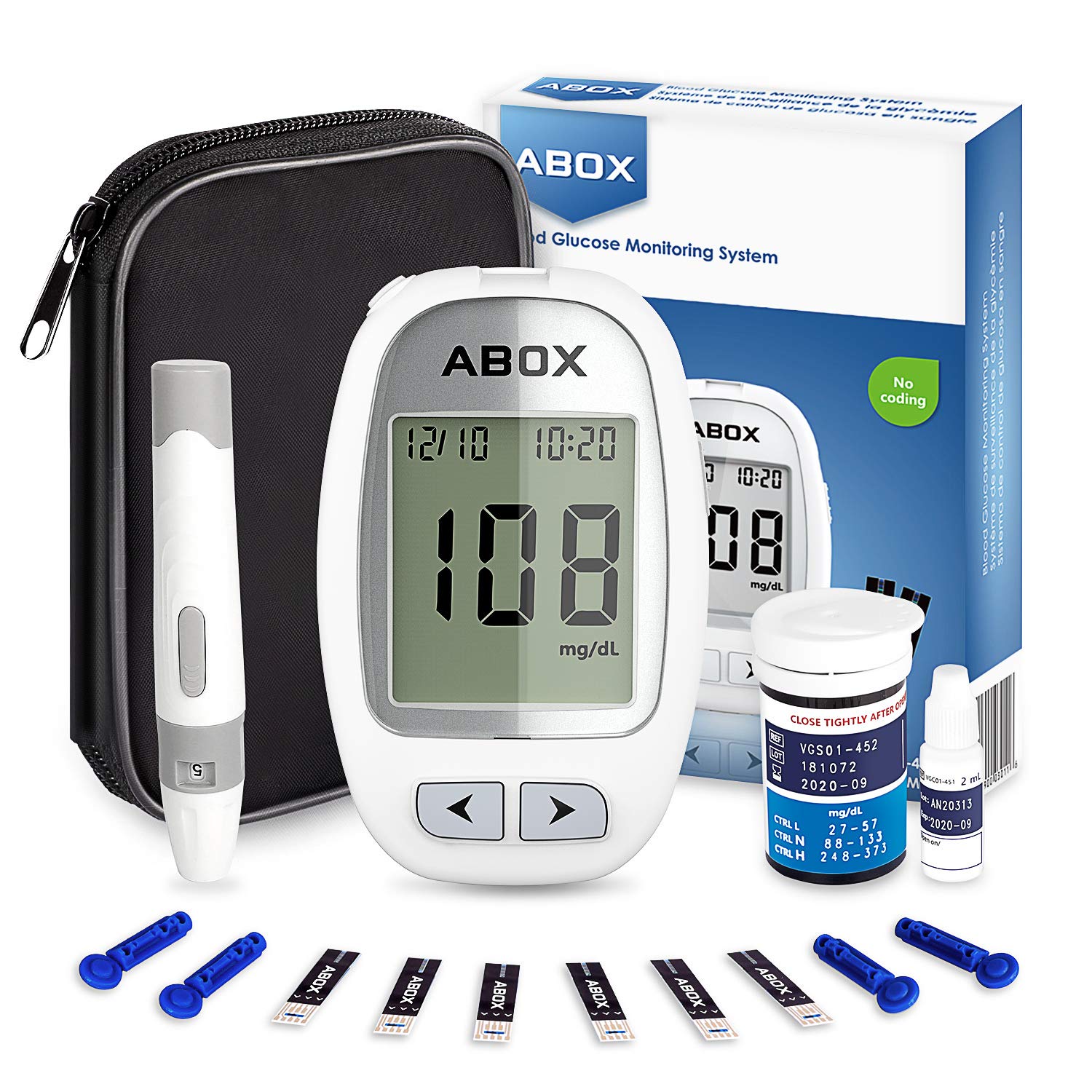 3 The failure to reduce insulin infusion rate and/or to use dextrose-containing solutions when blood glucose levels reach 250 mg/dl is the most important risk factor associated with hypoglycemia during insulin infusion.
3 The failure to reduce insulin infusion rate and/or to use dextrose-containing solutions when blood glucose levels reach 250 mg/dl is the most important risk factor associated with hypoglycemia during insulin infusion.
Frequent blood glucose monitoring (every 1–2 h) is mandatory to recognize hypoglycemia and serious complications. Many patients with hyperglycemic crises who experience hypoglycemia during treatment do not experience adrenergic manifestations of sweating, nervousness, fatigue, hunger, and tachycardia despite low blood glucose levels (GEU, unpublished observations). Clinicians should be aware that recurrent episodes of hypoglycemia might be associated with a state of hypoglycemia unawareness (loss of perception of warning symptoms of developing hypoglycemia), which may complicate diabetes management after resolution of hyperglycemic crises.
Hypoglycemia is not frequently observed in patients with HHS. Blood glucose values <60 mg/dl have been reported in <5% of HHS patients during intravenous insulin therapy. 3
3
Although the admission serum potassium concentration is commonly elevated in patients with DKA and HHS, during treatment, plasma concentration of potassium will invariably decrease. Both insulin therapy and correction of acidosis decrease serum potassium levels by stimulating cellular potassium uptake in peripheral tissues. Thus, to prevent hypokalemia, replacement with intravenous potassium as soon as the serum potassium concentration is ≤5.0 mEq/L is indicated (upper limits may vary by laboratory).
In patients admitted with normal or reduced serum potassium, insulin administration may precipitate profound hypokalemia.34 Thus, if the initial serum potassium is <3.3 mEq/L, intravenous potassium replacement should begin immediately, and insulin therapy should be held until serum potassium is ≥3.3 mEq/L (see Figures 1 and 2).
Cerebral edema is a rare but serious complication of DKA. It occurs in ∼1% of episodes of DKA in children38,39 and is associated with a mortality rate of 40–90%. 40 Clinically, cerebral edema is characterized by a decreasing level of consciousness and headache, followed by seizures, sphincter incontinence, pupillary changes, papilledema, bradycardia, and respiratory arrest.
40 Clinically, cerebral edema is characterized by a decreasing level of consciousness and headache, followed by seizures, sphincter incontinence, pupillary changes, papilledema, bradycardia, and respiratory arrest.
It has been hypothesized that cerebral edema in children with DKA may be caused by the rapid shift in extracellular and intracellular fluids and changes in osmolality due to accumulation of osmolytes in brain cells exposed to hyperosmolar conditions.41 A rapid decrease in extracellular osmolality during treatment would then result in osmotically mediated swelling of the brain. Although osmotic factors and other mechanisms may play a part in the development of cerebral edema, recent data suggest that cerebral edema in children with DKA is related to brain ischemia.42 In children with DKA, both hypocapnia (which causes cerebral vasoconstriction) and extreme dehydration (as determined by a high initial serum urea nitrogen concentration) were associated with increased risk for cerebral edema. Hyperglycemia superimposed on an ischemic insult increases the extent of neurological damage, blood-brain barrier dysfunction, and edema formation.
Hyperglycemia superimposed on an ischemic insult increases the extent of neurological damage, blood-brain barrier dysfunction, and edema formation.
In addition, it has been shown that a lower serum sodium concentration that does not resolve during therapy may be associated with increased risk of cerebral edema.42,43 The more frequent occurrence of cerebral edema in children than in adults may be explained in part by the fact that children’s brains have higher oxygen requirements than those of adults and are thus more susceptible to ischemia.
Measures that may decrease the risk of cerebral edema in high-risk patients are gradual replacement of sodium and water deficits in patients with high serum osmolality (maximal reduction in osmolality 3 mOsm/kg/h) and the addition of dextrose to the hydrating solutions once blood glucose reaches 250 mg/dl in DKA and 300 mg/dl in HHS.2
Patients with cerebral edema should be transferred to an intensive care unit setting. If signs of increased intracranial pressure or brain herniation are present, only 7–14% of patients recover without permanent significant neurological disabilities.
Treatment includes the immediate use of intravenous mannitol,40 reduction of fluid administration rate, and possible mechanical ventilation to help reduce brain swelling.44 Corticosteroid and diuretic therapy have no proven benefit over the immediate use of intravenous mannitol.40
PREVENTION
The financial burden of DKA and HHS is estimated to exceed $1 billion per year. The most common precipitating causes of DKA and HHS include infection, intercurrent illness, psychological stress, and noncompliance with therapy. Many episodes could be prevented through better and novel approaches to patient education and effective outpatient treatment programs.
Paramount in this effort is improved education regarding sick-day management. Education on sick-day management should review:
the importance of early contact with the health care provider
the importance of insulin during an illness and the reasons never to discontinue insulin without contacting the health care team
blood glucose goals and the use of supplemental short- or rapid-acting insulin
availability of medications to suppress a fever and treat an infection
initiation of an easily digestible li-quid diet containing carbohydrates and salt when nauseated
information for family members on sick-day management and record keeping, including assessing and documenting temperature, respiration and pulse, blood glucose and urine/blood ketones, insulin taken, oral intake, and weight
information for primary care providers and school personnel on the signs and symptoms of new-onset and decompensated diabetes.

Approximately 50% of DKA admissions may be preventable with improved outpatient treatment programs and better adherence to self-care. Outpatient management is more cost effective and can minimize missed days of school or work for patients with diabetes and their family members.45 The frequency of hospitalizations for DKA have been reduced following diabetes education programs, improved follow-up care, and access to medical advice.15,45,46
Additionally, an alarming rise in insulin discontinuation because of economic reasons as the precipitating cause for DKA in urban African Americans illustrates the need for health care legislation guaranteeing reimbursement for medications to treat diabetes.
Novel approaches to patient education incorporating a variety of health care beliefs and socioeconomic issues are critical to an effective prevention program.
Home blood ketone monitoring systems, which measure β-hydroxybutyrate levels on a fingerstick blood specimen, are now commercially available. 47 These systems measure β-hydroxybutyrate levels in 30 seconds with a detection range of 0–6 mmol/L. Clinical studies have shown that elevations of β-hydroxybutyrate levels are extremely common in patients with poorly controlled diabetes, even in the absence of positive urinary ketones.48 The use of home glucose-ketone meters may allow early recognition of impending ketoacidosis, which may help to guide insulin therapy at home and may possibly prevent hospitalization for DKA.
47 These systems measure β-hydroxybutyrate levels in 30 seconds with a detection range of 0–6 mmol/L. Clinical studies have shown that elevations of β-hydroxybutyrate levels are extremely common in patients with poorly controlled diabetes, even in the absence of positive urinary ketones.48 The use of home glucose-ketone meters may allow early recognition of impending ketoacidosis, which may help to guide insulin therapy at home and may possibly prevent hospitalization for DKA.
HHS occurs frequently in elderly or debilitated patients who do not recognize or cannot treat the symptoms of diabetes and dehydration or, in many cases, who have caregivers who are not knowledgeable about the signs and symptoms of diabetes and the conditions, procedures, and medications that can lead to decompensation. Therefore, additional education as well as the use of glucose and ketone monitoring may decrease the incidence and severity of HHS in this susceptible group.
Figure 1.
Protocol for Management of Adult Patients with Diabetic Ketoacidosis
*Serum Na+ should be corrected for hyperglycemia (for each 100 mg/dl glucose above 100 mg/dl, add 1. 6 mEq to sodium value for corrected serum sodium value).
6 mEq to sodium value for corrected serum sodium value).
**Upper limits for serum potassium may vary by laboratory.
Adapted with permission from reference 27.
Figure 2.
Management of Adult Patients with Hyperosmolar Hyperglycemic Syndrome
*This protocol is for patients admitted with mental status change or severe dehydration who require admission to an ICU.
**Effective serum osmolality calculation: 2[measured Na (mEq/l)] + glucose (mg/dl)/18
***Serum Na+ should be corrected for hyperglycemia (for each 100 mg/dl glucose above 100 mg/dl, add 1.6 mEq to sodium value for corrected serum sodium value).
†Upper limits for serum potassium may vary by laboratory.
Adapted with permission from reference 27.
Table 1.
Diagnostic Criteria for DKA and HHS
Table 2.
Typical Total Body Deficits of Water and Electrolytes Seen in DKA and HHS28
Footnotes
Guillermo E.
 Umpierrez, MD, FACP, is an associate professor of medicine, Mary Beth Murphy, RN, MS, CDE, MBA, is research nurse director, and Abbas E. Kitabchi, PhD, MD, FACP, FACE, is a professor of medicine and director of the Division of Endocrinology, Diabetes, and Metabolism at the University of Tennessee Health Science Center in Memphis.
Umpierrez, MD, FACP, is an associate professor of medicine, Mary Beth Murphy, RN, MS, CDE, MBA, is research nurse director, and Abbas E. Kitabchi, PhD, MD, FACP, FACE, is a professor of medicine and director of the Division of Endocrinology, Diabetes, and Metabolism at the University of Tennessee Health Science Center in Memphis.- American Diabetes Association
References
- ↵
Graves EJ, Gillium BS: Detailed diagnosis and procedures: National Discharge Survey, 1995. National Center for Health Statistics. Vital Health Stat 13 (no. 133), 1997
- ↵
Kitabchi AE, Umpierrez GE, Murphy MB, Barrett EJ, Kreisberg RA, Malone JI, Wall BM: Management of hyperglycemic crises in patients with diabetes. Diabetes Care 24:31–53, 2001
- ↵
Umpierrez GE, Kelly JP, Navarrete JE, Casals MMC, Kitabchi AE: Hyperglycemic crises in urban Blacks. Arch Int Med 157:669–675, 1997
- ↵
Umpierrez GE, Woo W, Hagopian WA: Immunogenetic analysis suggests different pathogenesis for obese and lean African-Americans with diabetic ketoacidosis.
 Diabetes Care 22:1517–1523, 1999
Diabetes Care 22:1517–1523, 1999 - ↵
Javor KA, Kotsanos JG, McDonald RC, Baron AD, Kesterson JG, Tierney WM: Diabetic ketoacidosis charges relative to medical charges of adult patients with type I diabetes. Diabetes Care 20:349–354, 1997
- ↵
Basu A, Close CF, Jenkins D, Krentz AJ, Nattrass M, Wright AD: Persisting mortality in diabetic ketoacidosis. Diabet Med 10:282–289, 1992
- ↵
Gerich JE, Lorenzi M, Bier DM, Tsalikian E, Schneider V, Karam JH, Forsham PH: Effects of physiologic levels of glucagon and growth hormone on human carbohydrate and lipid metabolism: studies involving administration of exogenous hormone during suppression of endogenous hormone secretion with somatostatin. J Clin Invest 57:875–884, 1976
- ↵
McGarry JD: Regulation of ketogenesis and the renaissance of carnitine palmitoyltransferase. Diabetes Metab Rev 5:271–284, 1989
- ↵
Felig P, Wahren J: Influence of endogenous insulin secretion on splanchnic glucose and amino acid metabolism in man.
 J Clin Invest 50:1702–1711, 1971
J Clin Invest 50:1702–1711, 1971 - ↵
Yu SS, Kitabchi AE: Biological activity of proinsulin and related polypeptides in the fat tissue. J Biol Chem 248:3753–3761, 1973
- ↵
Shade DS, Eaton RP: Dose response to insulin in man: differential effects on glucose and ketone body regulation. J Clin Endocrinol Metab 44:1038–1053, 1977
- ↵
Chupin M, Charbonnel B, Chupin F: C-peptide blood levels in ketoacidosis and in hyperosmolar non-ketotic diabetic coma. Acta Diabet 18:123–128, 1981
Gerich JE, Martin MM, Recant LL: Clinical and metabolic characteristics of hyperosmolar nonketotic coma. Diabetes 20:228–238, 1971
- ↵
Lindsey CA, Falooma GR, Unger RH: Plasma glucagon in nonketotic hyperosmolar coma. JAMA 229:1771–1773, 1974
- ↵
Kaufman FR, Halvorson M: The treatment and prevention of diabetic ketoacidosis in children and adolescents with type 1 diabetes mellitus. Pediatr Ann 28:576–582, 1999
- ↵
Kauffman FR, Halvorson M: Strategies to prevent diabetic ketoacidosis in children with known type 1 diabetes. Clin Diabetes 15:236–239, 1997
- ↵
Polonsky WH, Anderson BJ, Lohrer PA, Aponte JE, Jacobson AM, Cole CF: Insulin omission in women with IDDM. Diabetes Care 17:1178–1185, 1994
- ↵
Rydall AC, Rodin GM, Olmsted MP, Devenyi RG, Daneman D: Disordered eating behavior and microvascular complications in young women with insulin-dependent diabetes mellitus. N Engl J Med 336:1849–1854, 1997
- ↵
Wachtel TJ, Tetu-Mouradjain LM, Goldman DL, Ellis SE, O’Sullivan PS: Hyperosmolality and acidosis in diabetes mellitus: a three-year experience in Rhode Island. J Gen Int Med 6:495–502, 1991
- ↵
Campbell IW, Duncan LJ, Innes JA, MacCuish AC, Munro JF: Abdominal pain in diabetic metabolic decompensation: clinical significance. JAMA 233:166–168, 1975
- ↵
Guisado R, Arieff AI: Neurologic manifestations of diabetic comas: correlation with biochemical alterations in the brain. Metabolism 24:665–669, 1975
- ↵
Slovis CM, Mark VG, Slovis RJ, Bain RP: Diabetic ketoacidosis and infection: leukocyte count and differential as early predictors of infection. Am J Emerg Med 5:1–5, 1987
- ↵
Rumbak MJ, Hughes TA, Kitabchi AE: Pseudonormoglycaemia in diabetic ketoacidosis with elevated triglycerides. Am J Emerg Med 9:61–63, 1991
- ↵
Kaminska ES, Pourmatabbed G: Spurious laboratory values in diabetic ketoacidosis and hyperlipidemia. Am J Emerg Med 11:77–80, 1993
- ↵
Assadi FK, John EG, Formell L, Rosenthal IM: Falsely elevated serum creatinine concentration in ketoacidosis. J Pediatr 107:562–564, 1985
- ↵
Umpierrez GE, DiGirolamo M, Tuvlin JA, Issacs SD, Bhoolasm SM, Kokko JP: Differences in metabolic and hormonal milieu in diabetic- and alcohol-induced ketoacidosis. J Crit Care 15:52–59, 2000
- ↵
American Diabetes Association: Hyperglycemic crises in patients with diabetes mellitus (Position Statement). Diabetes Care 24:1988–1996, 2001
- ↵
Ennis ED, Stahl EJVB, Kreisburg RA: The hyperosmolar hyperglycemic syndrome. Diabetes Rev 2:115–126, 1994
- ↵
Kitabchi AE, Fisher JN, Murphy MB, Rumbak MJ: Diabetic ketoacidosis and the hyperglycemic hyperosmolar nonketotic state. In Joslin’s Diabetes Mellitus 13th ed. Kahn CR, Weir GC, Eds. Philadelphia, Pa., Lea & Febiger, 1994, p. 738–770
- ↵
Kitabchi AE, Ayyagari V, Guerra SMO, Medical House Staff: The efficacy of low dose versus conventional therapy of insulin for treatment of diabetic ketoacidosis. Ann Int Med 84:633–638, 1976
- ↵
Morris LR, Kitabchi AE: Efficacy of low-dose insulin therapy for severely obtunded patients in diabetic ketoacidosis. Diabetes Care 3:53–56, 1980
- ↵
Fisher JN, Shahshahani MN, Kitabchi AE: Diabetic ketoacidosis: low-dose insulin therapy by various routes. N Engl J Med 297:238–241, 1977
- ↵
Sacks HS, Shahshahani M, Kitabchi AE, Fisher JN, Young RT: Similar responsiveness of diabetic ketoacidosis to low-dose insulin by intramuscular injection and albumin-preinfusion. Ann Int Med 90:36–42, 1979
- ↵
Abramson E, Arky R: Diabetic acidosis with initial hypokalemia: therapeutic implications. JAMA 196:401–403, 1966
- ↵
Morris LR, Murphy MB, Kitabchi AE: Bicarbonate therapy in severe diabetic ketoacidosis. Ann Intern Med 105:836–840, 1986
- ↵
Fisher JN, Kitabchi AE: A randomized study of phosphate therapy in the treatment of diabetic ketoacidosis. J Clin Endocrinol Metab 57:177–180, 1983
- ↵
Zipf MB, Bacon GE, Spencer ML, Kelch RP, Hopwood NJ, Hawker CD: Hypocalcemia, hypomagnesemia, and transient hypoparathyroidism during therapy with potassium phosphate in diabetic ketoacidosis. Diabetes Care 2:265–268, 1979
- ↵
Bello FA, Sotos JF: Cerebral oedema in diabetic ketoacidosis in children. Lancet 336:64, 1990
- ↵
Duck SC, Wyatt DT: Factors associated with brain herniation in the treatment of diabetic ketoacidosis. J Pediatr 113:10–14, 1988
- ↵
Rosenbloom AL: Intracerebral crises during treatment of diabetic ketoacidosis. Diabetes Care 13:22–33, 1990
- ↵
Finberg L: Why do patients with diabetic ketoacidosis have cerebral swelling, and why does treatment sometimes make it worse? Arch Pediatr Adolesc Med 150:785–786, 1996
- ↵
Glaser N, Barnett P, McCaslin I, Nelson D, Trainor J, Louie J, Kaufman F, Quayle K, Roback M: Risk factors for cerebral edema in children with diabetic ketoacidosis. The Pediatric Emergency Medicine Collaborative Research Committee of the American Academy of Pediatrics. N Engl J Med 344:264–269, 2001
- ↵
Silver SM, Clark EC, Schroeder BM, Sterns RH: Pathogenesis of cerebral edema after treatment of diabetic ketoacidosis. Kidney Int 51:1237–1244, 1997
- ↵
White NH: Diabetic ketoacidosis in children. Endocrinol Metab Clin North Am 29:657–682, 2000
- ↵
Laffel LM, Brachett J, Kaufman F, Ho J, Anderson BJ: Changing the process of diabetes care improves metabolic outcomes and reduces hospitalizations. Qual Manag Health Care 6:53–62, 1998
- ↵
Runyan JW: The Memphis chronic disease program: comparisons in outcome and the nurse’s extended role. JAMA 231:264–267, 1975
- ↵
Byrne HA, Tieszen KL, Hollis S, Dornan TL, New JP: Evaluation of an electrochemical sensor for measuring blood ketones. Diabetes Care 23:500–503, 2000
- ↵
MacGillivray MH, Li PK, Lee JT, Mills BJ, Vourhess ML, Putnam TI, Schaeffer PA: Elevated plasma beta-hydroxybutyrate concentrations without ketonuria in healthy insulin-dependent diabetic patients. J Clin Endocrinol Metab 54:665–668, 1982
Metformin: medicine to treat type 2 diabetes
Like all medicines, metformin can cause side effects, although not everyone gets them.
Common side effects
Common side effects happen in more than 1 in 100 people.
Talk to your doctor or pharmacist if these side effects bother you or do not go away after 1 week:
- feeling sick (nausea)
- being sick (vomiting) or diarrhoea
- stomach ache
- loss of appetite
- a metallic taste in the mouth
Serious side effects
Serious side effects are rare and happen in less than 1 in 10,000 people.
Call your doctor straight away if you get warning signs of:
- a general feeling of discomfort with severe tiredness, fast or shallow breathing, being cold and a slow heartbeat
- yellow skin or the whites of your eyes turn yellow – these can be signs of liver problems
- extreme tiredness, lack of energy, pins and needles, a sore and red tongue, mouth ulcers, muscle weakness and disturbed vision – these could be signs of vitamin B12 deficiency anaemia
- a skin rash, redness or itching – this could be a sign of a skin disorder
Low blood sugar
Metformin does not usually cause low blood sugar (known as hypoglycaemia, or “hypos”) when taken on its own.
But hypos can happen when you take metformin with other diabetes medicines, such as insulin or gliclazide.
Early warning signs of low blood sugar include:
- feeling hungry
- trembling or shaking
- sweating
- confusion
- difficulty concentrating
It’s also possible for your blood sugar to go too low while you’re asleep.
If this happens, it can make you feel sweaty, tired and confused when you wake up.
Low blood sugar may happen if you:
- take too much of some types of diabetes medicines
- eat meals irregularly or skip meals
- are fasting
- do not eat a healthy diet and are not getting enough nutrients
- change what you eat
- increase your physical activity without eating more to compensate
- drink alcohol, especially after skipping a meal
- take some other medicines or herbal medicines at the same time
- have a hormone disorder, such as hypothyroidism
- have kidney or liver problems
To prevent hypoglycaemia, it’s important to have regular meals, including breakfast. Never miss or delay a meal.
If you’re planning to exercise more than usual, make sure you eat carbohydrates like bread, pasta or cereals before, during or after exercise.
Always carry a fast-acting carbohydrate with you, like sugar cubes, fruit juice or some sweets, in case your blood sugar level gets low. Artificial sweeteners will not help.
You may also need to eat a starchy carbohydrate, like a sandwich or a biscuit, to maintain your blood sugar for longer.
If taking in sugar does not help or the hypo symptoms come back, contact your doctor or the nearest hospital.
Make sure your friends and family know about your diabetes and the symptoms of low blood sugar levels so they can recognise a hypo if it happens.
Serious allergic reaction
It’s possible to have a serious allergic reaction (anaphylaxis) to metformin.
These are not all the side effects of metformin. For a full list, see the leaflet inside your medicines packet.
Hyperglycemia | Diabète Québec
Hyperglycemia is defined as blood glucose (sugar) levels that are higher than the target values for the majority of people with diabetes:
- above 7 mmol/L, fasting or before a meal
- above 10 mmol/L, two hours after the begining of a meal
Hyperglycemia occurs when the amount of insulin in the blood is insufficient or ineffective. When glucose circulating in the blood cannot enter the cells because of a lack of insulin, it accumulates in the blood and raises a person’s glycemia (blood glucose levels) .
Symptoms
Some people may not notice their hyperglycemia. However, above a certain threshold, high blood sugar can lead to the following symptoms:
- drowsiness
- increased urination
- intense thirst
- excessive hunger
- involuntary weight loss
- irritability
- dizziness
Causes
The primary causes of hyperglycemia are:
- a diet abnormally high in carbohydrates
- reduced physical activity
- insufficient insulin and/or antidiabetic medication (dosage error or a skipped dose)
- physical stress (illness, surgery, infection, etc.) or psychological stress (mourning a death, new job, moving, etc.)
- taking certain drugs (e.g.: cortisone)
Hyperglycemia can also be caused by two lesser known phenomena: the dawn phenomenon and the Somogyi effect.
Preventing hyperglycemia
In most cases, hyperglycemia can be avoided by taking the following precautions:
- Measure your blood glucose (sugar) levels regularly.
- Follow a daily meal plan designed by a dietitian.
- Take your insulin or antidiabetic medication as prescribed.
- Adjust your insulin dose based on your medical prescription
Treatment
If you experience hyperglycemic symptoms, you should:
- take your blood glucose (sugar) readings frequently
- if you have type 1 diabetes: if your blood glucose level is higher than 14 mmol/L, check for ketones in your urine or blood
- drink water regularly to prevent dehydration
- adjust your insulin as medically prescribed
- identify the cause of the hyperglycemia and take appropriate measures, if possible
Emergency situations
Call a doctor or get to Emergency if:
- your blood glucose reading is higher than 14 mmol/L with ketones
- in your urine: a “medium” to “high” level
- in your blood: a level higher than 1.5 mmol/L
- if you have type 1 diabetes: your blood glucose level is higher than 20 mmol/L with nausea, vomiting and/or abdominal pain
- if you have type 2 diabetes: your blood glucose level is higher than 25 mmol/L with excessive drowsiness
- you cannot retain liquids due to vomiting or diarrhea
- your state of consciousness changes: confusion, agitation, lack of reaction to stimulation, hallucinations or unusual behaviour
- you exhibit signs of dehydration: dry mouth, sunken eyes, dry skin, etc.
- your body temperature has stayed above 38.5 °C for more than 48 hours.
These symptoms could signal a hyperglycemic emergency.
Research and text: Diabetes Québec Team of Health Care Professionals
June 2014 (updated on August 2018)
©All rights reserved Diabetes Quebec
References:
S.A. Imran et al. Diabetes Canada 2018 Clinical Practice Guidelines for the Prevention and Management of Diabetes in Canada: Targets for Glycemic Control. Can J Diabetes 2018; 42 (Suppl 1): S42-S46.
Geoffroy L., and Gonthier, M., (2012) “L’hyperglycemia et l’acidose diabétique,” Le diabète chez l’enfant et l’adolescent, 2nd edition,. Montréal: Éditions du CHU Ste-Justine, pp. 355-364.
Sugar highs and lows: Rapid recognition
Diabetes is common. An estimated 8.2 percent of adults in the U.S. (range 4.4 to 17.9 percent) have diabetes1. Some 14 percent of total U.S. health care expenditures pay for treatment of people with diabetes, half of which pay for complications associated with vascular changes that lead to MIs (myocardial infarctions), strokes, kidney disease, retinal (eye) damage and foot ulcers.
The progression of these complications can be slowed with aggressive management of blood sugar levels and blood pressure as well as good eye care2. Alterations in blood glucose levels, both high and low, are often encountered by EMS providers. Depending on where you work, hypo- or hyperglycemia will account for 3 to 4 percent of your total EMS responses.
Hypoglycemia refers to low blood glucose levels, which often exhibits signs and symptoms. The most common cause of hypoglycemia results from diabetes medications although hypoglycemia can occur in people without diabetes from a variety of other causes.
Most commonly, hypoglycemia occurs in patients taking insulin. While textbooks often outline very specific hypoglycemia signs and symptoms, they are, in reality, very non-specific.
Many patients will have tremors, palpitations, sweating, and/or hunger. These actually have a behavioral effect of encouraging the patient to eat. Blood pressure and heart rate will usually increase, but not significantly.
There may be observable behavioral changes, loss of awareness and, at very low glucose levels, seizures or unconsciousness3. While signs and symptoms vary tremendously between patients, they remain consistent in any single patient from episode to episode.
Many times, patients are unaware of their symptoms even though they may be obvious to others around them. Because patients often have amnesia, they may have trouble describing an episode. For this reason, it is important to obtain information from family, friends or bystanders when possible.
The primary fuel for the brain is glucose, yet it can neither make nor store it. Our survival mandates that the body tightly regulate glucose levels and prevent (or rapidly correct) hypoglycemia.
Ordinarily, this happens effortlessly. When blood glucose levels fall into the 80 to 85 mg/dL range, the body slows or stops secretion of insulin. The lower limit of normal blood glucose levels in adults is 70 mg/dL (in neonates, 40 mg/dL).
When blood glucose levels fall into the 65 to 70 mg/dL range in people without diabetes, there is an increased release of counter regulating hormones (epinephrine and glucagon).
People with diabetes may not produce glucagon or not respond to circulating glucagon by releasing liver glycogen stores. The corrections happen well before the onset of signs and symptoms, which usually occur when glucose levels reach 50 to 55 mg/dL.
These thresholds shift to higher values in people with poorly controlled diabetes and to lower values in people with lower than usual baseline glucose levels from intensive diabetes therapy. For patients taking insulin, treatment is warranted when blood glucose values fall below 70 mg/dL.
While hypoglycemia can result from prolonged fasting and other medical conditions, drugs are the most common cause. Persons with diabetes treated with insulin routinely experience numerous episodes of hypoglycemia; in fact, their blood glucose levels may be less than 50 to 60 mg/dL up to 10 percent of the time3.
Mild hypoglycemic episodes occur in 30 to 50 percent of patients treated with insulin and 16 to 20 percent of patients treated with oral diabetic medications4.
Many factors including exercise and fever can increase glucose use in people taking insulin for treatment of diabetes, leading to hypoglycemic states from excess of circulating insulin.
Infants and children differ from adults in their ability to maintain normal glucose levels when not eating. An adult will maintain near normal glucose levels for weeks without eating; obese adults for months.
Children, however, drop their blood sugar levels to hypoglycemic values after 24 to 36 hours without food. The reasons for this are complex but important to consider when caring for younger patients.
Hyperglycemic emergencies ordinarily fall into one of two clinical syndromes: diabetic ketoacidosis (DKA) or hyperosmolar hyperglycemic state (HHS). The key differences relate to the presence of ketoacids in the blood and the severity of the glucose elevation.
The earliest signs and symptoms of hyperglycemia are polyuria (excessive urination), polydipsia (excessive thirst), and weight loss (from the high urine output)5. In children and adolescents, fatigue is also a key early finding.
DKA has a relatively quick onset, ordinarily evolving over 24 hours. Blood glucose levels range between 500 and 800 mg/dL and the blood is markedly acidic.
Patients often present with shortness of breath and abdominal pain and – especially in children – with nausea and vomiting. They rarely have altered mental status but are volume depleted, may have a fruity acetone-like (nail polish remover) odor on their breath, and have deep, rapid (Kussmaul) respirations to compensate for their acidotic blood state.
Patients with HHS often have much higher blood glucose levels, often more than 1000 mg/dL. Onset and progression of HHS is generally much slower than DKA.
The higher glucose levels significantly increase the osmolality of the blood often resulting in neurological symptoms ranging from confusion to unconsciousness. Some patients develop stroke-like symptoms or seizures. HHS patients rarely, if ever, present with abdominal pain.
In most instances of DKA or HHS, a precipitating factor can be readily identified. These commonly include infection (most often pneumonia or urinary tract), insufficient insulin dosing, or newly diagnosed diabetes.
DKA is more commonly seen in undiagnosed diabetes. In children and adolescents, DKA resulting from insufficient or improper insulin dosing is a major cause of mortality.
Before putting all this information together, consider an important fact about blood sugar: hypoglycemia kills brain cells.
An unconscious patient may be hyperglycemia, hypoglycemic, or have a normal blood sugar. You can tell the difference with a finger stick glucose meter.
If the ability to measure glucose is not available, glucose should be given. The risk of permanent brain damage from hypoglycemia far outweighs the danger of increasing an already elevated blood sugar.
Rapid assessment using all the clues described previously suggests that the most likely patients to experience hypoglycemia are those who take insulin.
The next most likely are patients taking oral diabetes medications. Contributing factors to hypoglycemic episodes are exercise, fever, and too much insulin (or oral medication).
In a person with diagnosed diabetes, ask family or friends what the patient’s usual hypoglycemic signs and symptoms are. If they are exhibiting different signs and symptoms, be suspicious that low blood sugar might not be the culprit.
Note that hyperglycemia, especially DKA (the most common cause of elevated blood sugar) often presents with abdominal pain, nausea and vomiting; not an altered level of consciousness.
In children, DKA will often mimic belly pain from appendicitis or gastroenteritis6. Be wary! Ultimately, the capability to measure blood glucose is the only definitive field assessment that will point you in the right direction. If you have any doubt, administer glucose.
Lastly, you may have noticed that nowhere in this article did I use the word, “diabetic.” That term should be eliminated from your vocabulary and replaced with the phrase, “person with diabetes.”
This switch in terminology acknowledges that the patient is responsible for managing the diabetes as a disease. When we call patients by the name of their disease, it sends a message that diabetes is controlling the patient.
Nothing could be further from the truth. As EMS providers, we should keep up with changing medical terminology, especially when it empowers our patients to take a more active role in their wellness.
References:
- Cory S, Ussery-Hall A, Griffin-Blake S, et al. Prevalence of selected risk behaviors and chronic diseases and conditions-steps communities, United States, 2006-2007. MMWR CDC Surveill Summ 2010; 59:S1.
- Nathan DM, Buse JB, Davidson MB, et al. Medical management of hyperglycemia in type 2 diabetes: a consensus algorithm for the initiation and adjustment of therapy: a consensus statement of the American Diabetes Association and the European Association for the Study of Diabetes. Diabetes Care 2009; 32:193.
- Cryer, PE. Hypoglycemia in diabetes. Pathophysiology, prevalence, and prevention. American Diabetes Association, Alexandria VA, 2009.
- Zammitt NN, Frier BM. Hypoglycemia in type 2 diabetes: pathophysiology, frequency, and effects of different treatment modalities. Diabetes Care 2005; 28:2948.
- Rose, BD, Post, TW, Clinical Physiology of Acid-Base and Electrolyte Disorders, 5th ed, McGraw-Hill, New York, 2001, pp. 809-815.
- Chaussain JL, Georges P, Calzada L, Job JC. Glycemic response to 24-hour fast in normal children: III. Influence of age. J Pediatr 1977; 91:711.
Metformin and Diabetes: Everything You Need To Know
By Marcia Kadanoff and Timothy Hay
Starting on metformin? My journey as a type 2 of learning how to deal with side effects, “faux lows,” and learning more about this therapy.
Editor’s note: this article is in Marcia’s perspective of living with type 2 diabetes, as written by Timothy Hay in January 2019. It was updated by Eliza Skoler in March 2021.
When I was first diagnosed with type 2 diabetes at the age of 58, my doctor immediately put me on metformin, a medication I didn’t know much about.
I soon learned why metformin is considered the first line of defense for people with the condition, as it is safe, effective, and affordable. It’s not linked to weight gain and it puts very little stress on the internal organs. I also read that metformin has side effects for some people.
I expected it to work like insulin in pill form and drop my blood sugar (around 180 mg/dl at the time) right away. But metformin doesn’t work like that. Not at all.
I learned – as millions of people with type 2 diabetes have – that metformin doesn’t immediately lower your blood sugar. It can take four or five days to experience the full benefit, depending on your dosage.
It might not solve all your problems in the blink of an eye. But it is an effective medicine, and its interaction with the body is complex and interesting.
Want more information like this?
Sign Up Now!
What We Know About Metformin
Metformin, which is also sold under the trade names Glucophage, Fortamet, Glumetza, and Riomet, is of the class of drugs called biguanides, which inhibit the production of glucose in the liver.
How does metformin work?
The medicine does not increase insulin levels in the body, but instead lessens the amount of sugar the body produces and absorbs. As it lowers glucose production in the liver, metformin also lowers blood sugar by increasing the body’s sensitivity to insulin. It also decreases the amount of glucose that our bodies absorb from the foods we eat.
What is metformin used for?
Metformin is commonly used to help people with type 2 diabetes manage their blood sugar levels. For most, metformin works to bring down blood sugar gradually when combined with a healthy diet and exercise (I found Adam Brown’s book, Bright Spots & Landmines: The Diabetes Guide I Wish Someone Had Handed Me to be helpful, particularly in deciding what to eat and not to eat). It’s not so much a quick fix with overnight results as it is an important component of a larger health regimen that keeps the condition manageable.
Is metformin safe?
Metformin is considered a safe, cheap, and effective medication worldwide, and is widely accessible in most countries.
What are the most common side effects of metformin?
Metformin does cause side effects in some people, but many of these are mild, and are associated with taking the medicine for the first time. Nausea and gastric distress such as stomach pain, gas, bloating, and diarrhea are somewhat common among people starting up on metformin.
For some people, taking large doses of metformin right away causes gastric distress, so it’s common for doctors to start small and build the dosage up over time. Many people start with a small metformin dose – 500 milligrams once a day – and build up over a few weeks until the dosage reaches least 1,500 milligrams daily. This means there’s less chance of getting an upset stomach from the medicine, but also means it may take a bit longer to experience the full benefit when getting started on metformin.
I experienced some mild side effects when I started taking metformin, and I found that the symptoms correlated with how many carbs I had in my diet. Once I dropped my carbs to 30-50 grams per day – something that took me weeks to do – any symptoms of gastric upset went away.
Asking your doctor for the extended-release version of metformin can keep these symptoms at bay, and so can tracking your diet.
What is the best time to take metformin?
Standard metformin is taken two or three times per day. Be sure to take it with meals to reduce the stomach and bowel side effects that can occur – most people take metformin with breakfast and dinner.
Extended-release metformin is taken once a day and should be taken at night, with dinner. This can help to treat high glucose levels overnight.
What are less common side effects of metformin?
The medication can cause more serious side effects, though these are rare. The most serious of these is lactic acidosis, a condition caused by buildup of lactic acid in the blood. This can occur if too much metformin accumulates in the blood due to chronic or acute (e.g. dehydration) kidney problems. Severe acute heart failure, or severe liver problems can also result in a lactate imbalance.
Metformin can also increase the risk of hypoglycemia (low blood sugar), particularly for those who take insulin and drugs which increase insulin secretion (such as sulfonylureas), but also when combined with excessive alcohol intake. Even though I’m not on insulin, I started on continuous glucose monitoring (CGM) to be able to keep a closer eye on my blood sugar levels. Of course, regular checking with a blood glucose meter is also helpful in preventing low blood sugar episodes.
Because long-term use of metformin can block absorption of vitamin B12, causing anemia, sometimes people need to supplement vitamin B12 through their diet as well.
For most people who take metformin, side effects are mild and relatively short in duration.
The “Faux Low”
There is another common side effect often experienced by people taking metformin for the first time. It’s something called a “faux low.”
A faux low happens when you drop your blood sugars to a “normal” range after running consistently high (i.e. above 180 mg/dl), whether by starting on a therapy like metformin or going on a low-carb diet, or both! Your body responds to this change as if it’s in real hypoglycemia (below 70 mg/dl).
Although every person with diabetes has a different blood-sugar threshold and different symptoms, people often feel irritable, tired, shaky, and dizzy when their blood sugar is 70 mg/dl or lower. When I experienced faux lows, I felt similarly dizzy, lightheaded, nauseous, and extremely hungry.
If you experience symptoms like these and have confirmed with a glucose meter the low you are feeling is indeed false (i.e. your meter says you’re at 96 mg/dl), keep taking your metformin as directed. Don’t start carb-loading (eating carb-rich foods like orange juice to bring sugars back up).
If I’m indeed having a faux low and not a real one, I found that drinking water and taking a high-sodium, non-carbohydrate snack (nuts are great for this, especially macadamia nuts which are high in fat) nips the symptoms in the bud, allowing me to move on with my life.
Note that especially for type 2 folks out there on metformin and insulin or sulfonylureas, hypoglycemia is a real risk. If you’re feeling low, check your blood sugar – there will be times when you do need to treat hypoglycemia with glucose tablets or orange juice or the like.
Metformin interactions: what should I avoid while taking metformin?
When taken at the same time, some drugs may interfere with metformin. Make sure your healthcare team is aware of any medications that you take before you start on metformin, especially certain types of diuretics and antibiotics. Remember, insulin and insulin releasing medications can increase your risk of hypoglycemia, so it is particularly important to carefully monitor your glucose levels.
You should also avoid drinking excessive amounts of alcohol while taking metformin – aim for no more than one glass per day for women, and two per day for men. Alcohol can contribute to lactic acidosis.
Does metformin cause cancer?
In 2019 the FDA investigated whether some forms of metformin contain high levels of a carcinogenic (cancer-causing) chemical called N-nitrosodimethylamine (NDMA). In 2020, the FDA recommended the recall of several versions of extended-release metformin, and more than a dozen companies have since voluntarily recalled certain lots of the medication. While low levels of NDMA are commonly found in foods and drinking water, high levels of the substance are toxic and can cause cancer.
You can check to see if your metformin has been recalled here. For people taking extended-release metformin, the FDA recommends that you continue to take your medication until you talk to your healthcare professional.
Other Possible Metformin Benefits
Most people with type 2 diabetes tolerate metformin well and are glad it’s available in generic form, which keeps the price low. The medication is so effective as a first-line therapy the American Diabetes Association includes it in its diabetes Standards of Care.
But metformin could have additional uses and benefits outside of treating type 2 diabetes.
Researchers are currently studying whether the medicine can help in the fight against cancer, neurodegenerative conditions, vision problems like macular degeneration, and even aging. It will be a while, however, before uses other than blood-glucose lowering are proven to be effective.
At the same time, metformin is also used in the treatment of gestational diabetes and polycystic ovary syndrome.
The American Diabetes Association has said more doctors should be prescribing metformin to treat prediabetes (a state of higher-than-normal blood glucose levels that doesn’t meet the diagnostic criteria for diabetes), especially for people under the age of 60, although the FDA has yet to bless metformin’s use for the condition.
Can metformin cause weight loss?
The FDA has also not officially approved metformin as an aid in losing weight. Many people with type 2 diabetes have lost weight after taking the drug, as researchers are still torn over exactly how metformin affects the weight. Some believe it decreases appetite, while others say it affects the way the body stores and uses fat.
Scientists are also examining metformin’s potential to protect against heart disease in people with type 2 diabetes – some older data supports this. While robust heart outcome trials with metformin are yet to be conducted, more attention is being paid to this research area.
Metformin and type 1 diabetes
It will be an exciting development if metformin is helpful in the treatment of cancer or neurodegenerative conditions like Huntington’s. But what if it is found to help people managing type 1 diabetes?
Metformin is not currently approved by US or European regulatory agencies for use in type 1s, but people have been known to take the medication anyway, and many doctors prescribe it if someone with type 1 diabetes is overweight. There are actually several reasons metformin is an attractive option for many type 1s. One, metformin has been found to help reduce glucose production in the liver, which is a problem in type 1 diabetes. Two, people often form resistance to the insulin they take, and metformin can help improve insulin sensitivity.
And, metformin may support weight loss and protection against heart disease. A study published in the Lancet following type 1 participants for three years found that compared to placebo, participants taking metformin lost weight. Particularly because insulin often causes weight gain, healthcare providers prescribe metformin “off-label” (not for intended use approved by regulatory agencies) to their type 1 patients. While the study didn’t find that metformin definitively protects against heart disease, based on observed trends in the data, the authors concluded that it may have a role in heart disease risk management.
The Bottom Line?
If you are a person with type 2 diabetes, there are plenty of benefits to taking metformin for its original, intended purpose.
Its side effects are minimal for most people. It’s affordable and covered by Medicare and most insurance plans. Speaking for myself: metformin doesn’t have to cure aging or cancer to be immensely valuable. It helps me process insulin and go on with my life. For me, that’s enough.
About Marcia Kadanoff
Marcia Kadanoff is an advisor to The diaTribe Foundation. She was diagnosed with type 2 diabetes in June 2017 at the age of 50-something, and both her parents and grandparents died of diabetes-related complications. With the help of diaTribe and Adam Brown’s book, Bright Spot & Landmines, Marcia discovered that type 2 diabetes can be put into remission with lifestyle changes. Over the next 7 months, Marcia worked to reverse her diabetes through a LCHF (low-carb, healthy fat) way of eating and regular exercise. Along the way, she lost 45 lbs (!) and found that she no longer suffered from sleep apnea and fibromyalgia. Marcia has maintained her weight loss for a year and had a 4.9% A1C at her last checkup. She wants other people with type 2 to know that they too can put their diabetes into remission.
Signs of End-of-Life Due to Diabetes
When it comes to treating diabetes at the end-of-life, hospice’s goal is to keep the patient as comfortable as possible rather than focusing on trying to keep glucose levels within the target range. While individuals can be and are admitted to hospice with the diagnosis of diabetes, as with most diseases, it’s more common that diabetes is part of a comorbidity, meaning the patient has diabetes but also has some other life-limiting diseases and secondary conditions.
Still, it’s important that, as a family caregiver, you know the signs and symptoms of diabetes at the end-of-life, as well as what complications may arise.
What are the signs of end-of-life due to diabetes?
Diabetes at the end-of-life can lead to several life affecting complications but being able to recognize the signs of high and low blood glucose (blood sugars) can help avoid these complications. If you recognize any of the following end-of-life diabetes signs, please contact the patient’s primary care physician or hospice care provider.
Signs of high blood glucose include:
- using the bathroom frequently
- increased drowsiness
- infections
- increased thirst
- increased hunger
- itching
- weight loss
- fatigue
- numbness in fingers/toes
- wounds that are slow to heal
Signs of low blood glucose include:
- Feeling irritable or anxious
- Trembling and sweating
- Paleness
- Palpitations
- Blurred vision
- Sweating
Tips for managing end-of-life Diabetes symptoms.
Keeping blood glucose levels within the target range may be difficult during this time and therefore is not as much of a priority at the end-of-life. Instead, you’ll ideally want to focus on the patient’s comfort, and doing what you can to manage the immediate symptoms associated with diabetes and accompanying comorbid and secondary conditions rather than worry about keeping blood sugars within a certain range.
What you can do for your loved one.
Being present for your loved one in their time of need is one of the most important things you can do. Sometimes just being a comforting presence to your loved one is enough. As a family caregiver, you can also make sure to pay attention for the signs of end-of-life diabetes and report them to your loved one’s medical service providers.
How hospice can help with end-stage Diabetes.
Hospice supports not just the patient, but the family and family caregiver, by providing a number of different services that help satisfy their physical, emotional, and spiritual needs.
The Crossroads team consists of doctors, nurses, aides, social workers, and volunteers ready to help. If you would like to learn more, please select one of the contact options from the blue Help Center bar to speak with someone 24/7.
End-of-Life signs by disease.
Learn about the specific end-of-life signs of common diseases and illnesses:
More end-of-life resources.
90,000 Plasma glucose: research in the KDLmed laboratory
Glucose is a simple sugar, the main hydrocarbon in the blood and the main source of energy for all cells.
Russian synonyms
Blood sugar analysis, blood glucose, fasting blood glucose analysis.
Synonyms English
Blood sugar, fasting blood sugar, FBS, fasting blood glucose, FBG, fasting plasma glucose, blood glucose, urine glucose.
Research method
Enzymatic UV method (hexokinase).
Units
Mmol / L (millimol per liter).
What biomaterial can be used for research ?
Venous, capillary blood.
How to properly prepare for the study?
- Do not eat for 12 hours before testing.
- Eliminate physical and emotional stress 30 minutes before the study.
- Do not smoke for 30 minutes before donating blood.
General information about the study
Glucose is a simple sugar that serves as the body’s main source of energy. The carbohydrates consumed by humans are broken down into glucose and other simple sugars, which are absorbed by the small intestine and enter the bloodstream.
Most cells in the body require glucose for energy production. The brain and nerve cells need it not only as a source of energy, but also as a regulator of their activity, since they can function only if the blood glucose reaches a certain level.
The body can use glucose thanks to insulin, a hormone produced by the pancreas. It regulates the movement of glucose into the cells of the body, forcing them to accumulate excess energy in the form of a short-term reserve – glycogen or in the form of triglycerides deposited in fat cells. A person cannot live without glucose and insulin, the content of which in the blood must be balanced.
Normally, the glucose content rises slightly after a meal, while the secreted insulin lowers its concentration.Insulin levels depend on the volume and composition of the food you eat. If the glucose concentration drops too low, which can happen after several hours of fasting or after intense physical work, then glucagon (another hormone of the pancreas) is released, which causes liver cells to convert glycogen back into glucose, thereby increasing its content in the blood. When the glucose-insulin feedback mechanism is working properly, blood glucose remains fairly stable.If this balance is disturbed and the glucose level increases, then the body seeks to restore it, firstly, by producing more insulin, and secondly, by excreting glucose in the urine.
Extreme forms of hyper- and hypoglycemia can threaten the patient’s life, causing organ dysfunction, brain damage and coma. Chronically high blood glucose can damage the kidneys, eyes, heart, blood vessels, and nervous system. Chronic hypoglycemia is dangerous for the brain and nervous system.
Hyperglycemia (gestational diabetes) sometimes occurs during pregnancy in women. If left untreated, it can lead to the mother having a large baby with low blood glucose levels. Interestingly, a woman suffering from hyperglycemia during pregnancy does not necessarily have diabetes after pregnancy.
What is the research used for?
The glucose level is important in the diagnosis of hyper- and hypoglycemia and, accordingly, in the diagnosis of diabetes mellitus, as well as for its subsequent monitoring.The test can be done on an empty stomach (after 8-10 hours of fasting), spontaneously (at any time), after meals, and can also be part of an oral glucose tolerance test (GTT).
If diabetes is detected, it is recommended to perform a fasting blood glucose test or glucose tolerance test. Moreover, for the final confirmation of the diagnosis, analyzes should be carried out twice at different times.
Most pregnant women are tested for gestational diabetes (a temporary type of hyperglycemia) between the 24th and 28th weeks of pregnancy.
Diabetics should closely monitor their blood glucose levels to adjust pill intake and insulin injections. It is usually required to determine several times a day how much the glucose concentration deviates from the norm.
Measurement of glucose levels at home, as a rule, is carried out using a special device – a glucometer, in which a test strip is placed with a pre-applied drop of blood from the patient’s finger.
When is this test scheduled?
- For prophylactic examination of patients without suspected diabetes, since diabetes is a disease that begins with minor symptoms. It is especially important to monitor blood glucose levels for patients with a genetic predisposition to diabetes, overweight, and those over 45 years of age.
- For the diagnosis of diabetes in patients with symptoms of hyper- or hypoglycemia. Symptoms of hyperglycemia: increased thirst, increased urination, fatigue, blurred vision, increased susceptibility to infections.Symptoms of hypoglycemia: sweating, increased appetite, anxiety, blurred consciousness, blurred vision.
- In case of loss of consciousness or severe weakness, to find out if it is caused by low glucose levels.
- If a patient has a pre-diabetic condition (in which the plasma glucose is higher than normal, but lower than in diabetic patients), the analysis is performed at regular intervals.
- For persons diagnosed with diabetes mellitus, a blood glucose test is prescribed in conjunction with a glycated hemoglobin (A1c) test to monitor the change in blood glucose over a long period of time.
- In some cases, this test may be used in conjunction with an insulin and C-peptide assay to monitor insulin production.
- Pregnant women are usually screened for gestational diabetes at the end of term. If a woman has been diagnosed with gestational diabetes before, then she takes a glucose test during the entire pregnancy, as well as after childbirth.
What do the results mean?
Reference values
Age | Reference values |
Less than 14 years | 3.3 – 5.6 mmol / l |
Over 14 years | 4.1 – 5.9 mmol / l |
Glucose Score
Glucose level | Feature |
3.9 to 5.5 mmol / L (70-99 mg / dL) | Normal level |
5.6 to 6.9 mmol / L (100-125 mg / dL) | Elevated level (prediabetes) |
7 mmol / L (126 mg / dL) and above with repeated repetition of the analysis | Diabetes |
Other causes of high glucose:
- acromegaly,
- severe stress (reaction to trauma, heart attack, stroke),
- chronic renal failure,
- hypercortisolism syndrome (Itsenko – Cushinga),
- taking drugs such as corticosteroids, tricyclic antidepressants, diuretics, epinephrines, estrogens, lithium, diphenin (dilantin), salicylates,
- excess intake of high-carbohydrate food,
- hyperthyroidism,
- pancreatic cancer,
- pancreatitis.
Causes of low blood glucose:
- adrenal insufficiency,
- alcohol abuse,
- Taking drugs such as acetaminophen and anabolic steroids,
- liver disease,
- hypopituitarism,
- hypothyroidism,
- insulin overdose,
- insulinomas,
- starvation.
Important notes
- Hypoglycemia is characterized by a drop in blood plasma glucose to a level at which disorders of the nervous system occur (sweating, trembling, hunger, anxiety), then the brain is also affected (blurred consciousness, hallucinations, blurred vision, sometimes coma and even death ).
- For a confident diagnosis of hypoglycemia, confirmation of the Viple triad is required:
- glucose level below the threshold of 40 mg / dL (2.2 mmol / L),
- symptoms of hypoglycemia,
- disappearance of symptoms when blood glucose returns to normal.
- Primary hypoglycemia is a rare form and is usually diagnosed during childhood.
- Signs of hypoglycemia sometimes appear in patients whose blood sugar is not low.If this is the case, dietary changes, such as eating smaller meals more often throughout the day and choosing complex carbohydrates, may be sufficient to relieve symptoms.
Also recommended
Who orders the study?
Therapist, endocrinologist, pediatrician, general practitioner, gastroenterologist, surgeon.
“Diabetic foot” office in Noginsk at the Tomograd medical center
A “Diabetic Foot” cabinet has opened in our diagnostic center.
Diabetic foot syndrome
One of the most important problems of endocrinology is the prevention and treatment of late complications of diabetes mellitus. Among them, “diabetic foot syndrome” occupies a special place in predicting survival and determining the quality of life.
Diabetic foot is a late complication of diabetes mellitus, a pathological condition of the feet in the form of purulent-necrotic processes, ulcers and osteoarticular lesions, which occurs against the background of changes in peripheral nerves, blood vessels, skin and soft tissues, bones and joints.
Complaints of a patient with diabetes mellitus:
- Presence of wounds, ulcers, hyperkeratosis (calluses) on the feet;
- Pain in the feet and legs;
- Presence of deformity of the feet;
- Decrease or increase in the sensitivity of the skin on the feet and legs.
The main mechanisms of leg damage in diabetes mellitus are diabetic neuropathy (damage to nerve endings in the extremities, leading to a decrease in all types of sensitivity) and diabetic angiopathy (impaired vascular patency).Neuropathy occurs 2-3 times more often than angiopathy, so the widespread opinion that all problems in diabetes are caused by vascular pathology is incorrect.
Due to neuropathy, sensitivity is impaired, and the patient can injure his leg (burn, injure with shoes, etc.) and not feel it. Any diabetes wound may take a long time to heal due to high blood sugar levels. The occurrence of trophic ulcers in diabetic foot syndrome (85-90% of cases) can ultimately lead to disability: more than half of all amputations (not related to trauma) occur in patients with diabetes.
What to do to prevent this from happening?
First, to treat diabetes by maintaining blood sugar levels within acceptable limits (up to 5.5-6.0 mmol / L on an empty stomach and up to 8-9 mmol / L after meals).
Treatment of leg lesions will never be effective without normalizing blood sugar levels!
Secondly, follow special rules for foot care.
Third, timely treatment of diabetic neuropathy and angiopathy.Medicines should be prescribed by specialists from the Diabetic Foot offices, as well as by endocrinologists and neurologists.
Fourthly, to eliminate the so-called “minor problems of the feet” (dry skin, moisture in the skin of the interdigital spaces, calluses), which are risk factors for the syndrome of “diabetic foot”.
In Russia, at present, the proportion of high amputations (at the level of the thigh) with the syndrome of “diabetic foot” is 40%.It is possible to avoid or reduce the risk of such an outcome only with an early visit to a diabetic foot doctor, appropriate examination and treatment.
In order to correctly determine the cause of pain, prescribe the necessary treatment, determine the risk of developing diabetic foot syndrome and make efforts to reduce it, there is a specialized office “Diabetic foot”. The examination is carried out by a doctor with extensive experience in this area, Dodonkin Sergey Vladimirovich.Patients with diabetes mellitus are advised to visit the Diabetic Foot office at least once a year.
90,000 Scientists: diabetes can have five types at once
- James Gallagher
- BBC Science Observer
Photo author, Getty Images
Photo caption,
People with diabetes Type 1 needs insulin injections
Scientists have concluded that diabetes can be a group of five different diseases.In their opinion, this discovery may help find more effective ways to combat diabetes.
Diabetes is a dangerous disorder in blood glucose levels. It is usually divided into two types: the first and the second. But researchers in Sweden and Finland have put forward the theory that things are not so simple.
According to statistics, one in 11 adults in the world suffers from diabetes. This disease can lead to stroke, heart attack, impaired kidney function, blindness, and leg amputation.
Type 1 diabetes mellitus is an autoimmune disease of the endocrine system.This type of diabetes is characterized by a lack of insulin due to the destruction of the beta cells of the pancreas.
Type 2 diabetes mellitus is considered mainly the result of unhealthy lifestyles, as excessive obesity can reduce the sensitivity of body tissues to insulin.
Researchers at the Diabetes Research Center at Lund University in Sweden and the Finnish Institute of Molecular Medicine examined 14,775 diabetics and performed a thorough analysis of their blood samples.
The results, published in the Lancet Diabetes and Endocrinology, suggest that patients can be divided into five new groups.
- Group 1 – severe autoimmune diabetes. Essentially the same as type 1 diabetes. It begins at a young age, but due to poor metabolic control, these patients experience impaired insulin production
- Group 2 – severe insulin deficiency. In many ways, this group is similar to people with type 1 diabetes, since the disease began at a young age, these patients have a violation of insulin production, but there are no problems with being overweight.However, the scientists note, in this case, the immune system has nothing to do with it
- Group 3 – severe insulin-resistant diabetes, which is characterized by obesity and severe insulin resistance
- Group 4 – moderate diabetes associated with obesity, but the metabolism of these patients is closer to normal than in group 3
- Group 5 – mild age-related diabetes. These patients are significantly older than the rest of the groups, and their symptoms are significantly milder
Photo Credit, Getty Images
Photo Caption,
Diabetic patients should have their blood glucose checked
Professor Leif Groop, who was involved in the study, said in an interview with Bi- BBC that “this is very important: we have made a renal step towards the development of acupuncture medicine.”
“Ideally, we could make a specific diagnosis and then proceed with individualized diabetes care,” he adds.
Patients in Group 2 are currently believed to be suffering from type 2 diabetes – even though it is not autoimmune diabetes.
However, according to Swedish and Finnish scientists, the real cause of the disease in this case is not obesity, but insulin deficiency due to the destruction of beta cells in the pancreas.
Accordingly, the methods of treating such patients should be closer to the methods of treating patients with type 1 diabetes.
In addition, scientists believe that people with type 2 diabetes are at higher risk of going blind, and people with type 3 diabetes are more likely to have kidney problems.
Classification
Dr. Victoria Salem of Imperial College London says that many experts considered the system of dividing diabetes into only two groups imperfect. But, she adds, doctors’ approach to diabetes is unlikely to change anytime soon.
The study looked only at patients in Scandinavia.However, the risk of diabetes varies considerably between different countries and regions.
“This is a very poorly understood issue, and it could very well be that there could even be 500 types of diabetes around the world, depending on genetic factors as well as the lifestyle of the local population,” she says.
Sudesh Kumar, professor at Warwick Medical Institute, says the results from the Scandinavian study are just the first step in the right direction.
“Now we need to understand if the patients’ condition will improve if they are prescribed different courses of treatment,” he says.
Nutritionists named the most dangerous drinks for those wishing to lose weight: Food: From life: Lenta.ru
American nutritionists named drinks that should be refused by those wishing to lose weight. Their advice is quoted by Eat This, Not That!
Experts consider purchased juices and smoothies, sweet alcoholic cocktails and cold coffee-based drinks to be the most dangerous for losing weight. The juices that can be found on the market are usually high in sugar and very low in fiber.“They can cause a spike in blood sugar levels, which then plummet just as quickly. This will make you want to eat even more sweets, ”says nutritionist Amy Goodson.
Related materials
00:07 – January 10
00:01 – December 17, 2020
Nutritionist Laura Burak advises not to drink smoothies that are sold in bottles. These drinks can contain up to 500 calories and 40-50 grams of sugar. “Despite the fact that this sugar comes from fruits, and there may be some beneficial substances in smoothies, I would advise those who are losing weight to avoid them,” says Burak.
Excessive alcohol consumption can lead to weight gain on its own, but according to nutritionist Lauren Manaker, sugary alcoholic cocktails are especially harmful. “Take pina colada, for example – these are empty calories from alcohol and fat, to which are added calories from coconut and sugar. This drink will not contribute to weight loss in any way, especially if you drink it often, ”says Manaker.
Goodson adds that if you do have to drink alcohol at a party or family holiday, it is better to choose wine or drinks that do not contain additional calories.
Another enemy of losing weight nutritionists call cold drinks based on coffee. Burak argues that in chain restaurants, even a serving of latte can contain from 500 to 1200 kilocalories, and the amount of sugar in them, as a rule, exceeds the general daily requirement.
In the event that giving up your favorite coffee drink is not easy, Manaker recommends cooking it with skim milk and not adding whipped cream to the cup.
Earlier, British nutritionist Frankie Phillips told how many cups of coffee a day an adult can drink.She believes that you should not drink more than three to five servings of this drink.
Elevated blood sugar: causes and symptoms
Almost everyone has heard the expression “blood sugar”. But not everyone realizes that it is wrong and is a historical relic. In the Middle Ages, medicine considered the presence of sugar in the blood to be the cause of many diseases. In fact, it is not there – we are talking about the glucose level.
Glycemia
The level of sugar or glucose in the blood is called glycemia. The normal amount of fasting fingerstick glucose should be 3.3 to 5.5 mmol for every liter of blood. After eating, this figure should be in the range of 5.6-6.6 mmol / l.
Attention! If on an empty stomach it is higher than 6.7 mmol / l, then this is considered one of the main signs of diabetes.
With a reduced amount of glucose in the blood (below 3.3 mmol / l), they speak of hypoglycemia, and with an increased amount, hyperglycemia. Both conditions manifest themselves as a deterioration in well-being.
In hypoglycemia, the central nervous system is deprived of its main fuel. As a result of a sharp drop in glucose levels, it is even possible for a person to fall into a coma. Hyperglycemia is also hazardous to health. It can be fatal.
Hyperglycemia
A common cause of hyperglycemia is malnutrition with the inclusion in the diet of a large number of sugar-containing foods and foods that are high in simple carbohydrates. The response of the body is expressed in the production of large amounts of insulin by the pancreas.As a result, an excessive amount of glucose accumulates in the tissues.
First signs of hyperglycemia
Mild hyperglycemia is expressed in increased thirst. More serious problems are indicated by signs such as:
- frequent urination;
- sudden weight loss;
- dry mouth;
- dry skin;
- arrhythmia;
- deep and rare breathing;
- fatigue;
- fog before the eyes.
90,043 impaired consciousness;
Attention! In the most severe cases, the person may go into a coma.
Diabetes mellitus
The main cause of hyperglycemia is diabetes mellitus. People with diabetes either have insufficient insulin levels or the hormone does not work properly, that is, insulin resistance is observed. The glucose remains in the bloodstream, which ultimately leads to symptoms of hyperglycemia.
Attention! Excess glucose from the blood enters the urine and leads to the removal of the necessary minerals and salts from the body.As a result, a person has increased thirst and frequent urination, and dehydration may develop.
Other causes of hyperglycemia include problems with the pancreas, kidneys, adrenal glands, and hypothalamus.
Diabetes mellitus during pregnancy
In some women, hyperglycemia develops as a result of a condition called gestational diabetes. It can be observed during the period of gestation. This form of diabetes develops when the body is unable to produce enough insulin to meet the needs of pregnancy, which causes blood glucose levels to rise.
Factors contributing to the development of hyperglycemia
Factors contributing to the development of diabetes mellitus include:
90,084 90,043 stress;
Prevention of high blood sugar
The main preventive measure is proper nutrition. Recommended products are:
- black or special diabetic bread, in the amount of 200 g per day;
- lean meat and poultry – 100 g;
- soups with vegetables in meat or fish broth – twice a week;
- vegetables, fruits and garden herbs without restriction, with the exception of carrots, potatoes and beets, for which the norm is not more than 100-200 g;
- eggs – 1-2 pcs.;
- low-fat fermented milk products — 1-2 tbsp. in a day.
Eat correctly and regularly, exercise, exclude unhealthy foods from your diet and be healthy!
90,000 symptoms, danger, how to replenish the balance – read on TEA.ru
Irritability, headaches, fatigue, heaviness in the legs, and sleep disturbances can be more than just seasonal or age-related ailments.It is likely that magnesium is the culprit for feeling unwell. More precisely, its lack. This mineral helps fight stress, fights disease, affects heart function, participates in the formation of bones and muscles, stabilizes blood sugar levels and lowers bad cholesterol. So it’s time to check if everything is all right with him.
How to know if you are lacking magnesium
Magnesium deficiency is not so easy to detect: many do not even think about the fact that it may not be enough.However, there are several signs that tell you it’s time to pay attention to this important element. At least revise the diet. Better yet, take a blood test for magnesium and consult with your doctor to determine the best supportive care option.
1. Irritability and nervousness. If the simplest situation pisses you off – a long queue, a aching baby, a lost glove, or morning traffic jam – this may be the first sign of a magnesium deficiency.After all, he is just responsible for the work of the nervous system. And if she stops coping, that’s a bad sign.
2. Headaches and cramps. Since magnesium plays an important role in muscle contraction and relaxation, a lack of magnesium can lead to spasms and cramps. If your legs cramp at night, there is heaviness and tingling in the limbs, even if the eye just twitches – it’s time to take care of the presence of magnesium in the body. Migraines and severe headaches are also often a consequence of magnesium deficiency cramps.
3. Sleep disorders. Magnesium is not only involved in muscle relaxation, but is also responsible for lowering levels of the stress hormone cortisol. And therefore it is simply necessary for normal sleep. If you cannot sleep for a long time, are anxious and lie awake for several hours, and in the morning you can hardly get yourself out of bed, most likely your nervous system does not have enough magnesium.
4. Increased blood pressure, heart palpitations. Since magnesium helps to regulate the balance of calcium and sodium, a lack of magnesium immediately affects the functioning of the cardiovascular system.A person develops arrhythmia, heart palpitations, heart pains, increases blood pressure, and increases the risk of heart attack and stroke.
5. Deterioration in appearance. All of these symptoms directly affect a person’s appearance. Dull hair, brittle nails, gray or pale skin, puffiness and dark circles under the eyes indicate that the body urgently needs vitamins and minerals. Do not hesitate to contact a doctor with such symptoms: he will tell you what tests you need to take, and prescribe the correct regimen for taking vitamins and dietary supplements.
Why and how we are losing valuable mineral
Magnesium is not produced in the body; it can only be obtained from the outside. But it is actively excreted with liquid. What factors accelerate the loss of magnesium?
Regular consumption of alcoholic beverages (more than three times a week with one glass of wine) automatically puts you at risk. Beer, cocktails and wine are diuretic products, which means they contribute to the rapid elimination of magnesium.Lovers of coffee with sweet rolls are also at risk. The diuretic effect of coffee in combination with fast carbohydrates, for the processing of which magnesium is also spent, can lead to a deficiency of the valuable mineral.
Constant stress and excessive exercise can deplete magnesium stores. The situation is aggravated by improper nutrition, an excess of fats, thermally processed and refined food. Another important factor is illness and medication. The reason for magnesium deficiency can be metabolic disorders, excess weight, problems with the gastrointestinal tract, kidney and endocrine system diseases, taking antibiotics and birth control pills, uncontrolled calcium intake.
Top 5 Magnesium-Rich Foods
The daily requirement of the body for magnesium is about 400 mg for men and 300 for women. The indicator may fluctuate depending on age, physical condition and pregnancy. This mineral is not produced in the body, so we can get it only with food or in the form of a hotel supplement. The dosage and schedule for taking trace elements should be prescribed by a doctor, but you can adjust the diet yourself.
Sunflower seeds and seeds. 100 g of raw pumpkin seeds contain more than 500 mg of magnesium, sesame
– more than 350 mg, in sunflower seeds – 125 mg. But this does not mean that you need to consume them in such quantities every day! Sunflower seeds and seeds are high in calories and in large quantities can cause stomach upset. But you can add a teaspoon of seeds to your diet to make up for the magnesium deficiency.
Nuts. Another filling and rich in nutrients.Almost all varieties contain magnesium, but cashews, almonds are the leaders in its quantity.
and pine nuts (250 to 290 mg magnesium per 100 g raw product). You should also not abuse nuts, on average it is recommended to eat no more than 30-60 grams per day.
Dark chocolate. Choose one that contains 70% cocoa or more. This is exactly the kind of chocolate
will benefit the body: not only magnesium (from 152 mg in one tile), but also iron, manganese, copper and other valuable substances.
Leafy greens. The greenery from the garden contains magnesium, as well as iron, manganese, vitamins C, A, K and other useful substances. The most magnesium is in sorrel (100 mg) and spinach (87 mg).
Fish. An impressive list of nutrients in fish: vitamin B, omega, potassium, selenium and, of course, magnesium. Of the most popular varieties, you should pay attention to mackerel and pollock: 100 g of boiled product contains about 50 mg of magnesium.
What else to include in the diet to increase magnesium levels in the body
Be sure to eat legumes (especially chickpeas and black beans), avocados, tofu, whole grains (primarily buckwheat and brown rice), bananas, porcini mushrooms, carrots and beets, dried fruits, halva and cocoa.


 Umpierrez, MD, FACP, is an associate professor of medicine, Mary Beth Murphy, RN, MS, CDE, MBA, is research nurse director, and Abbas E. Kitabchi, PhD, MD, FACP, FACE, is a professor of medicine and director of the Division of Endocrinology, Diabetes, and Metabolism at the University of Tennessee Health Science Center in Memphis.
Umpierrez, MD, FACP, is an associate professor of medicine, Mary Beth Murphy, RN, MS, CDE, MBA, is research nurse director, and Abbas E. Kitabchi, PhD, MD, FACP, FACE, is a professor of medicine and director of the Division of Endocrinology, Diabetes, and Metabolism at the University of Tennessee Health Science Center in Memphis.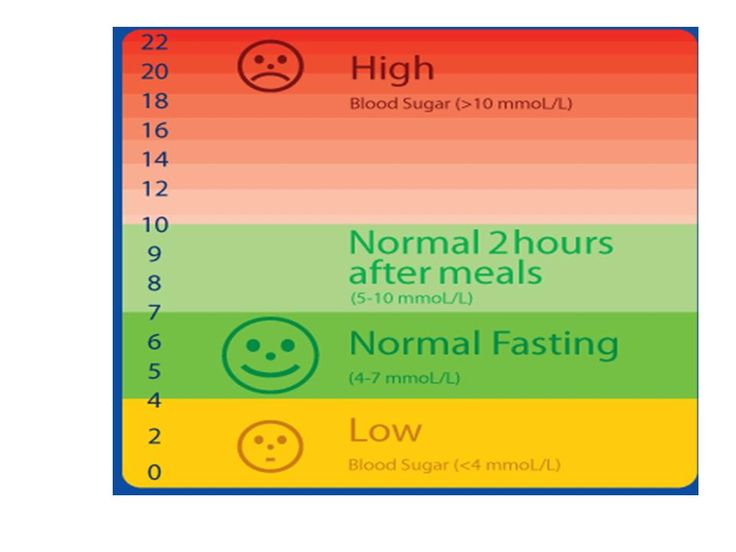 Diabetes Care 22:1517–1523, 1999
Diabetes Care 22:1517–1523, 1999 J Clin Invest 50:1702–1711, 1971
J Clin Invest 50:1702–1711, 1971